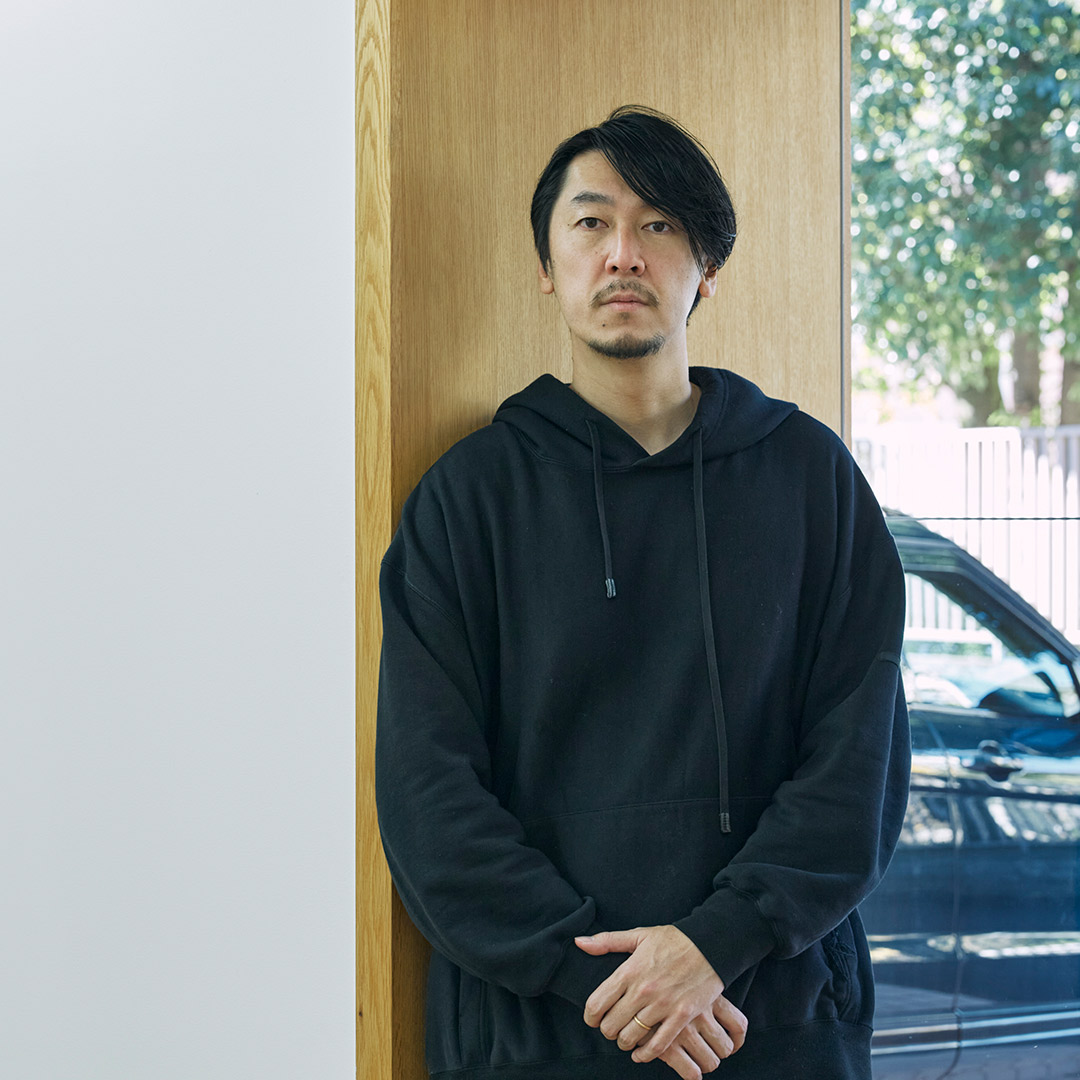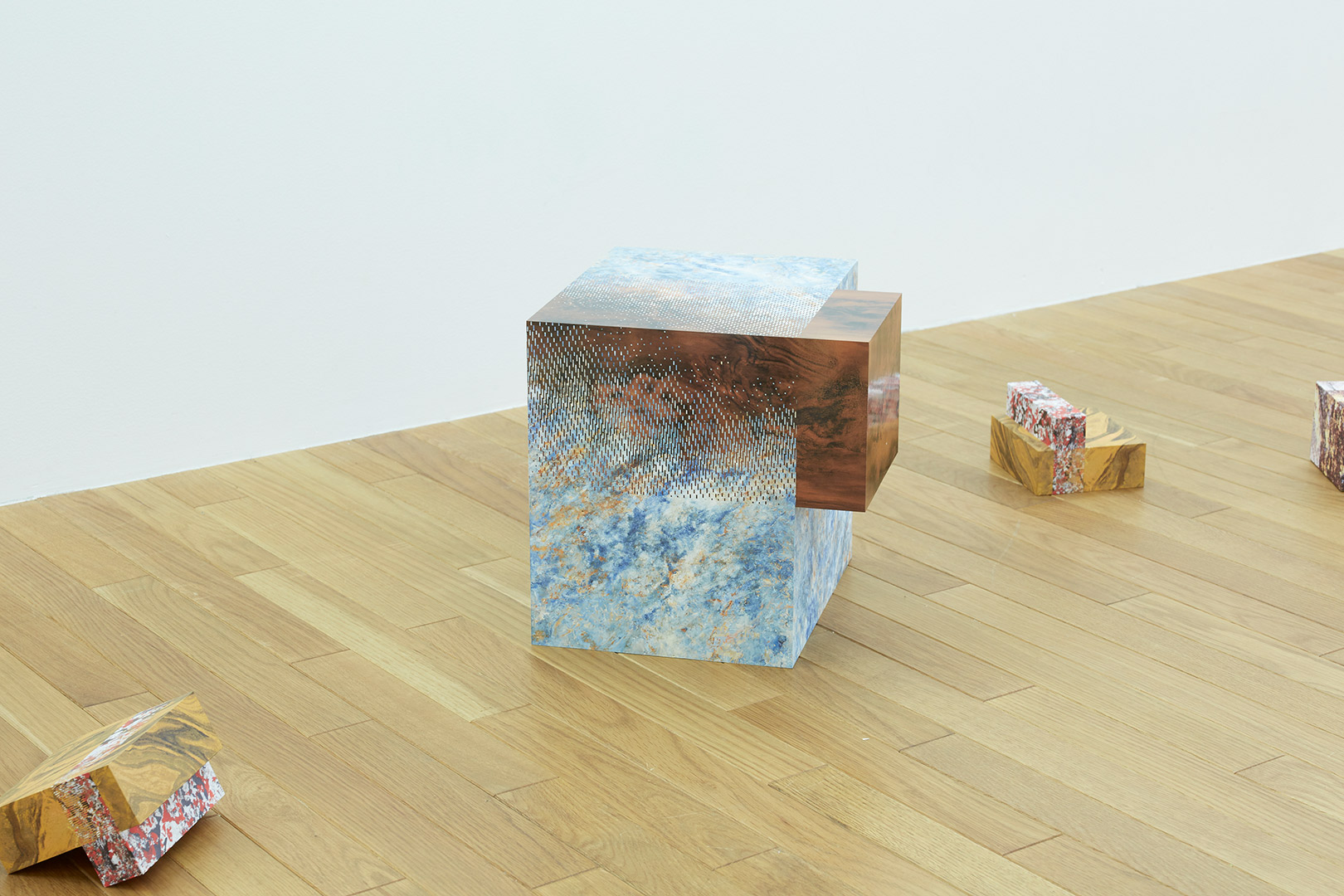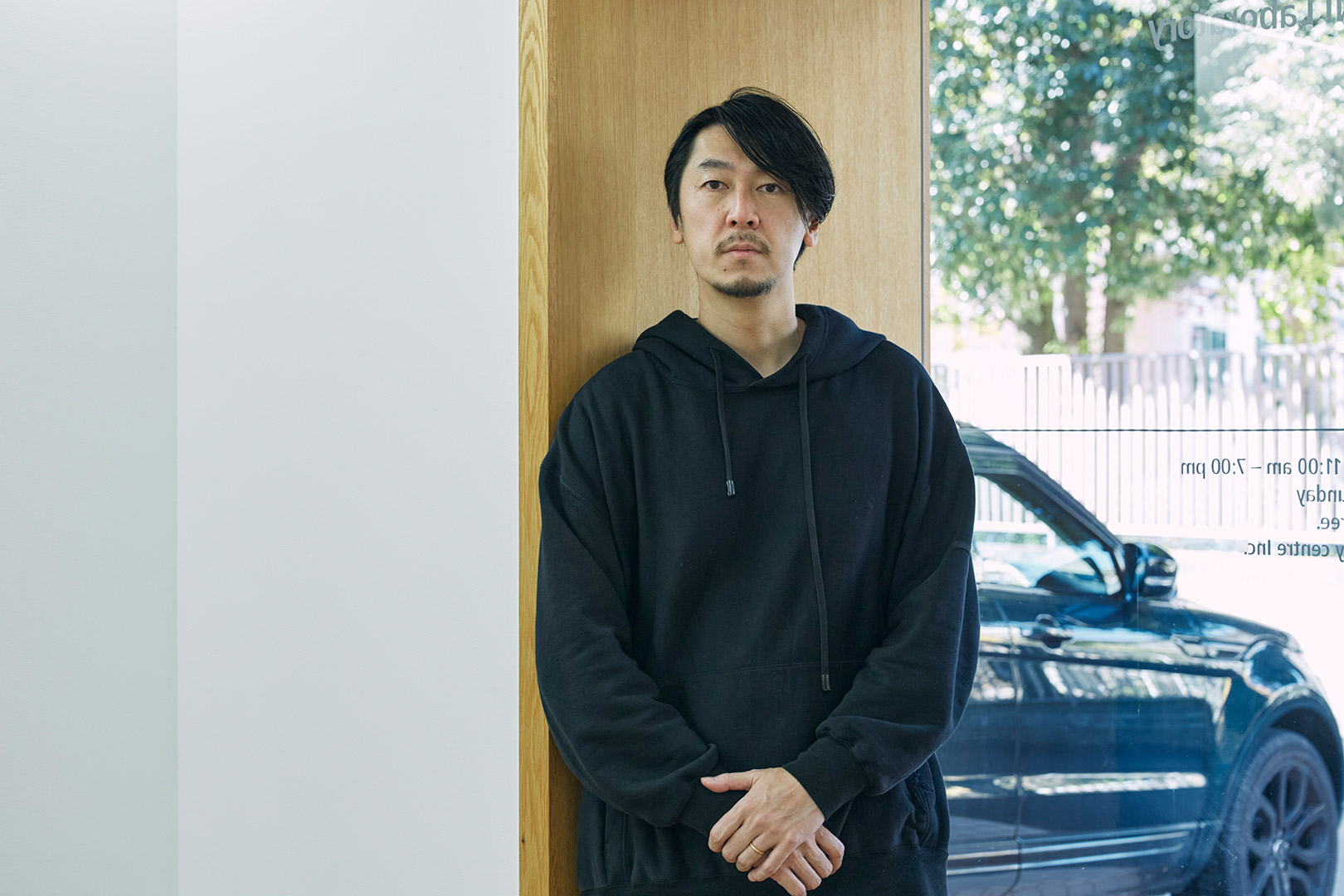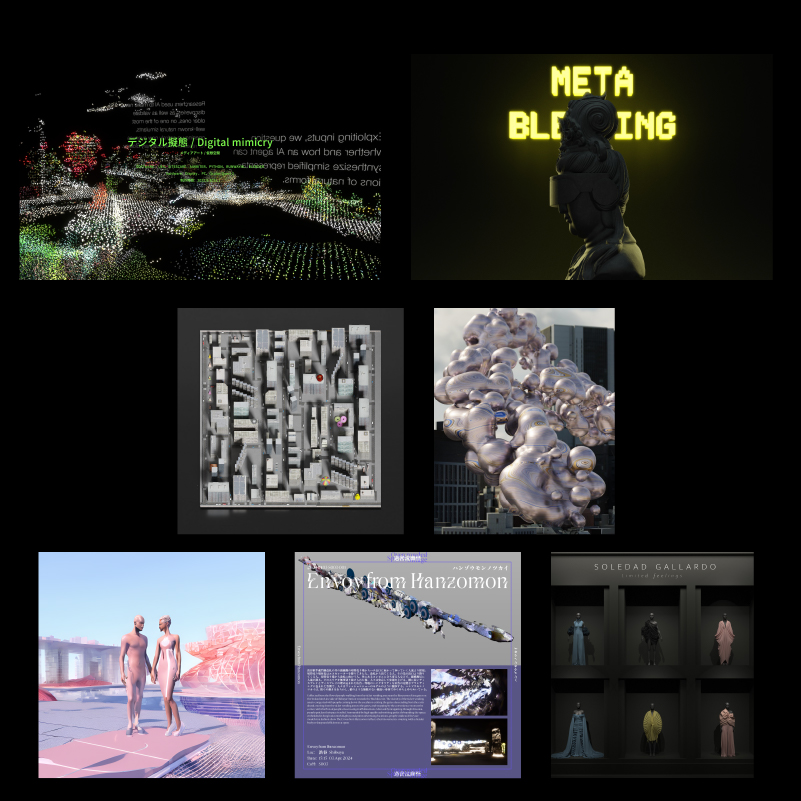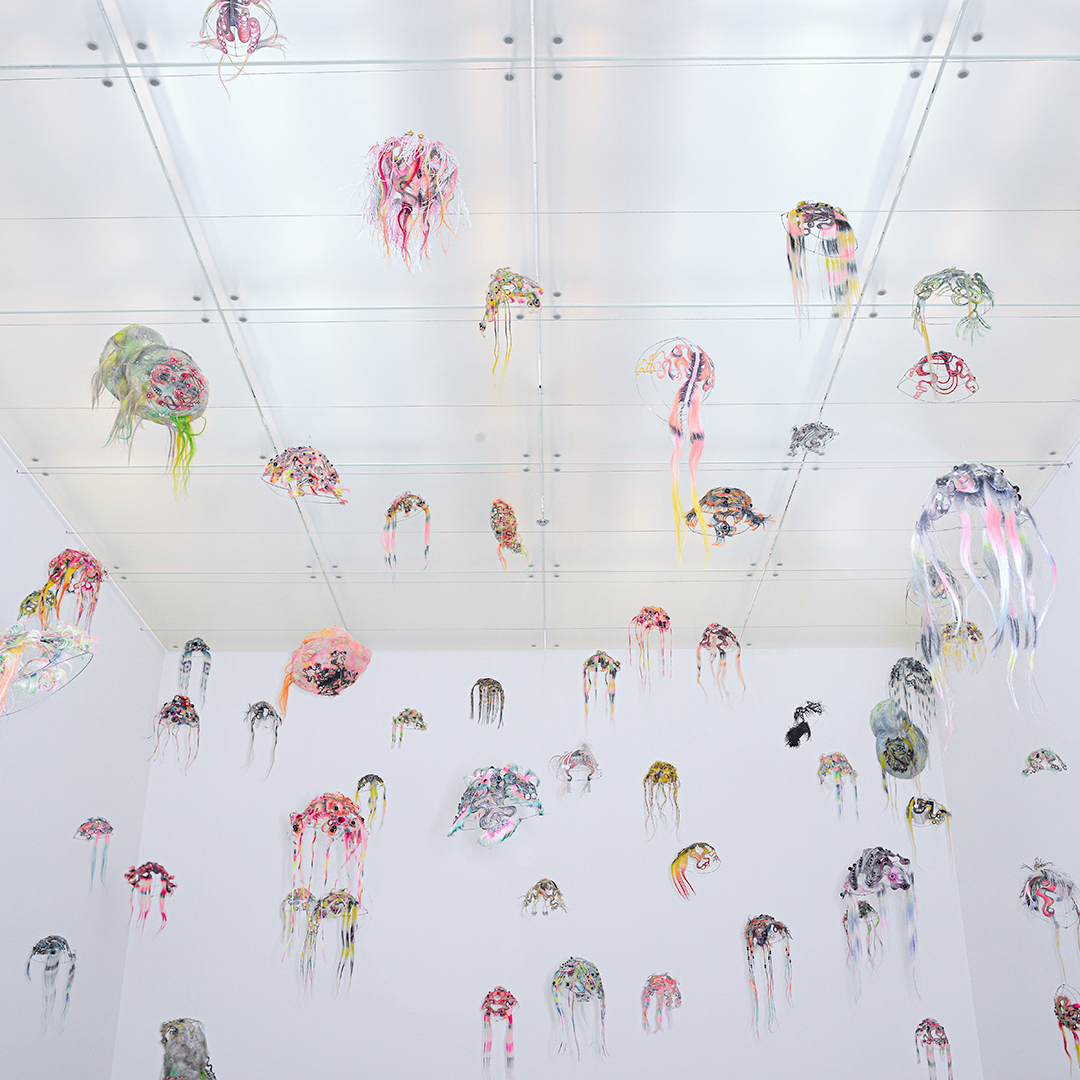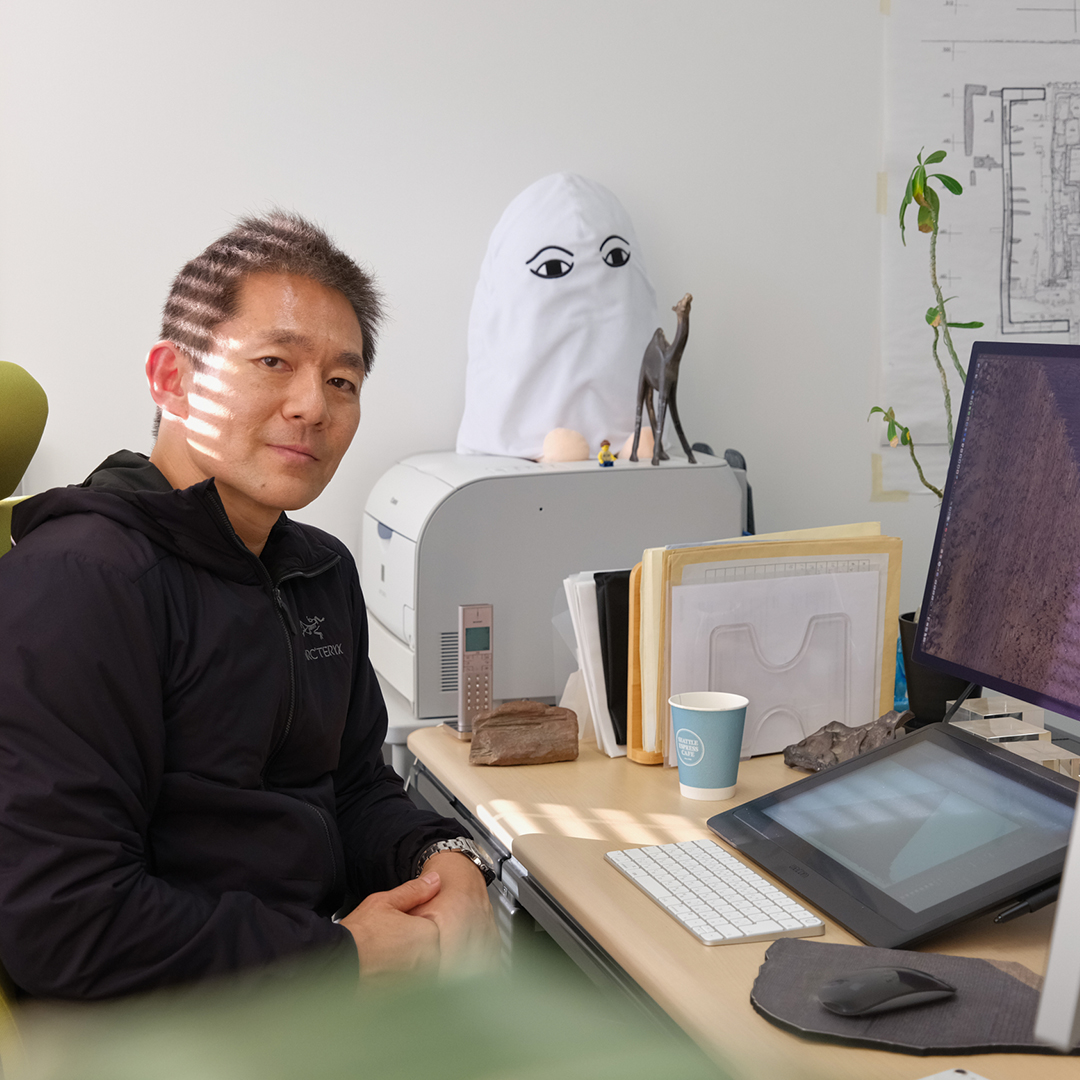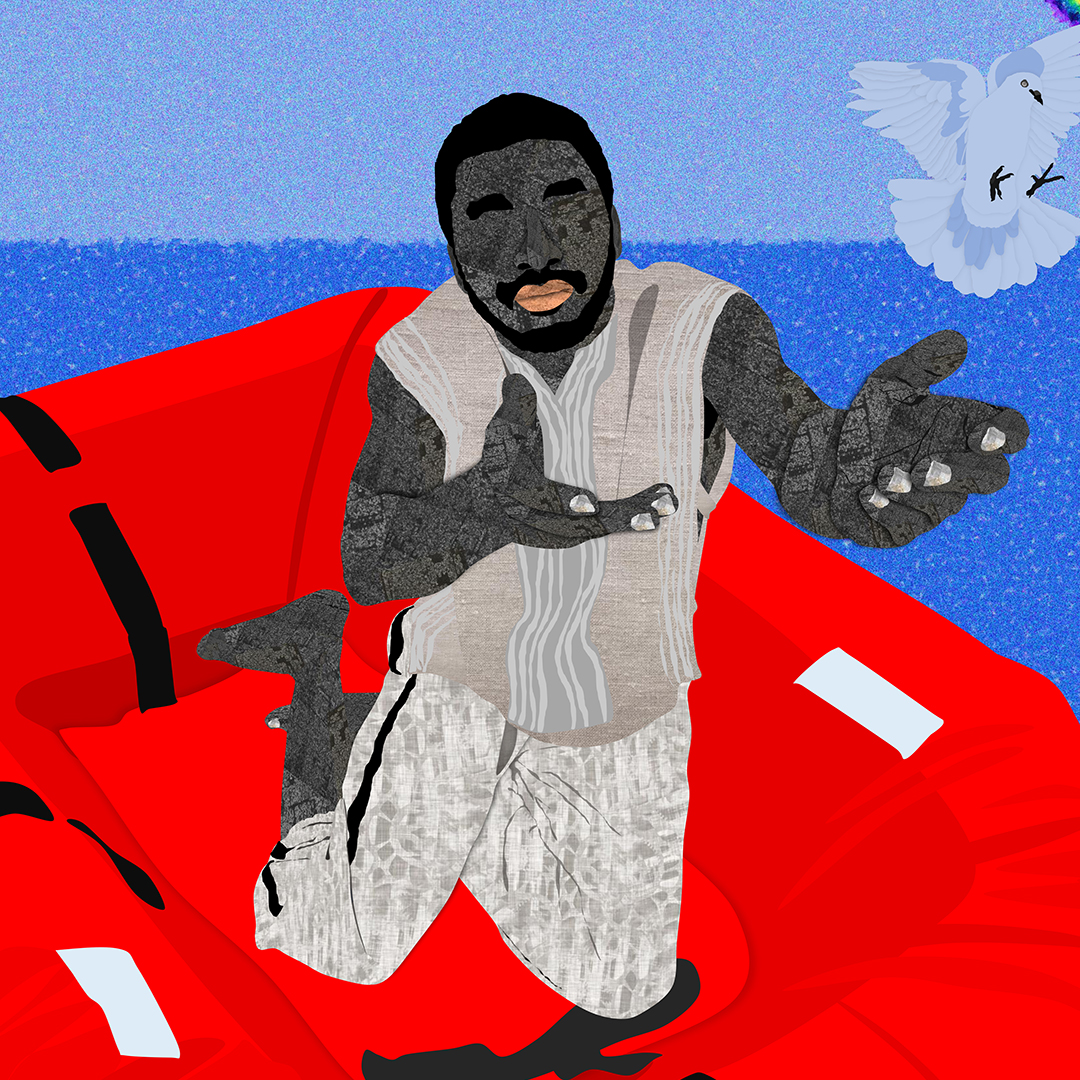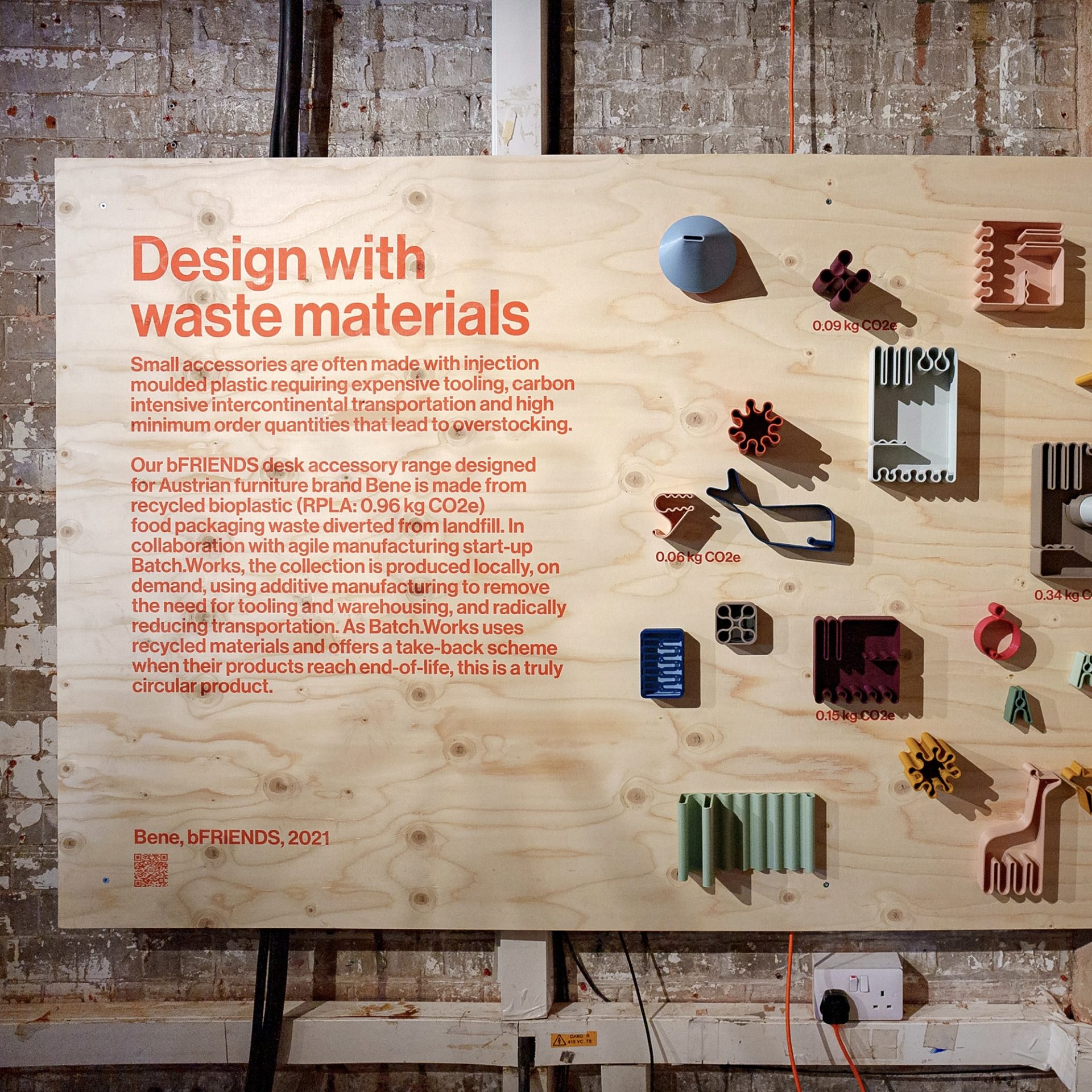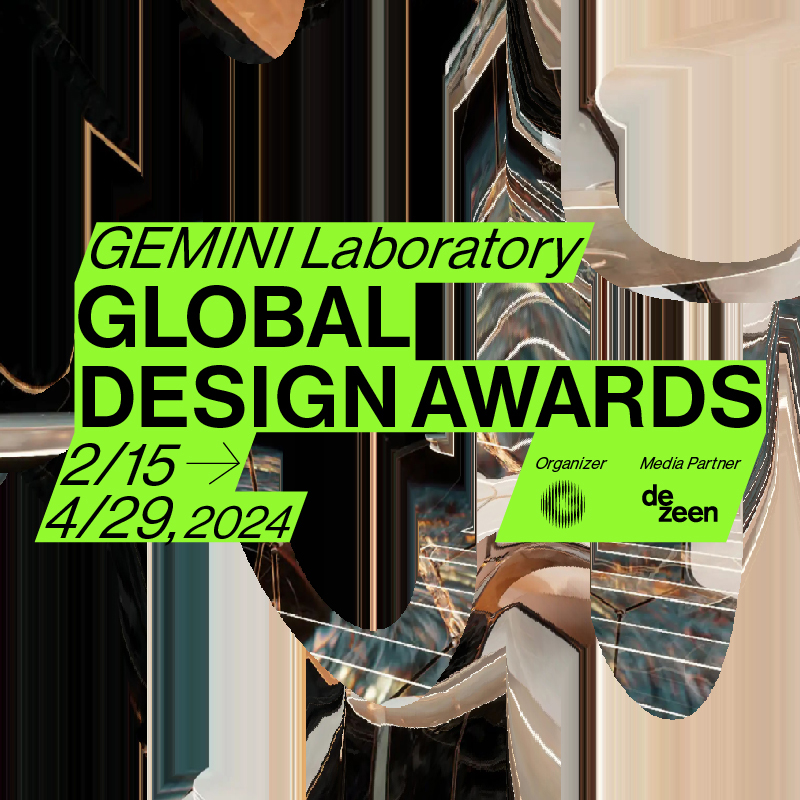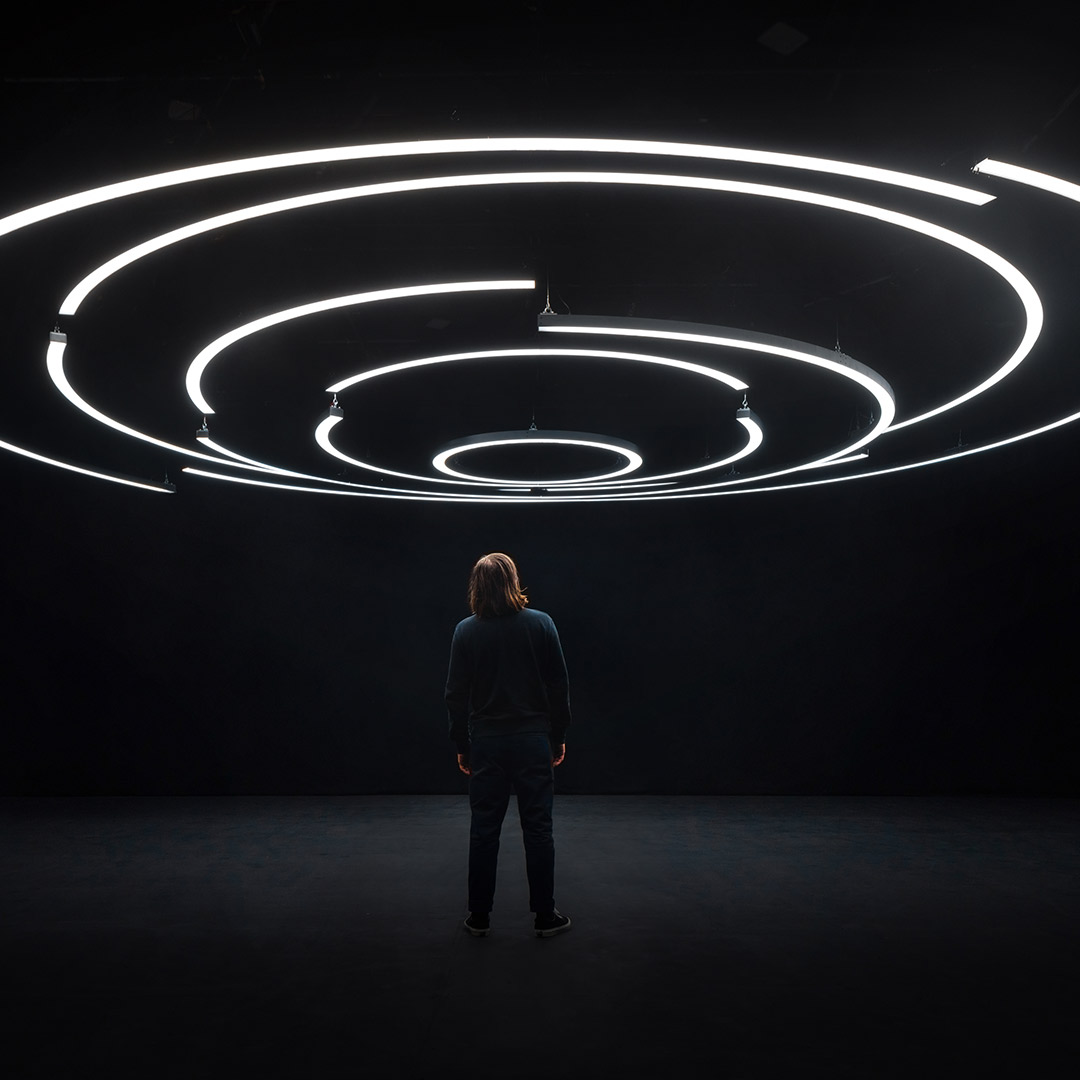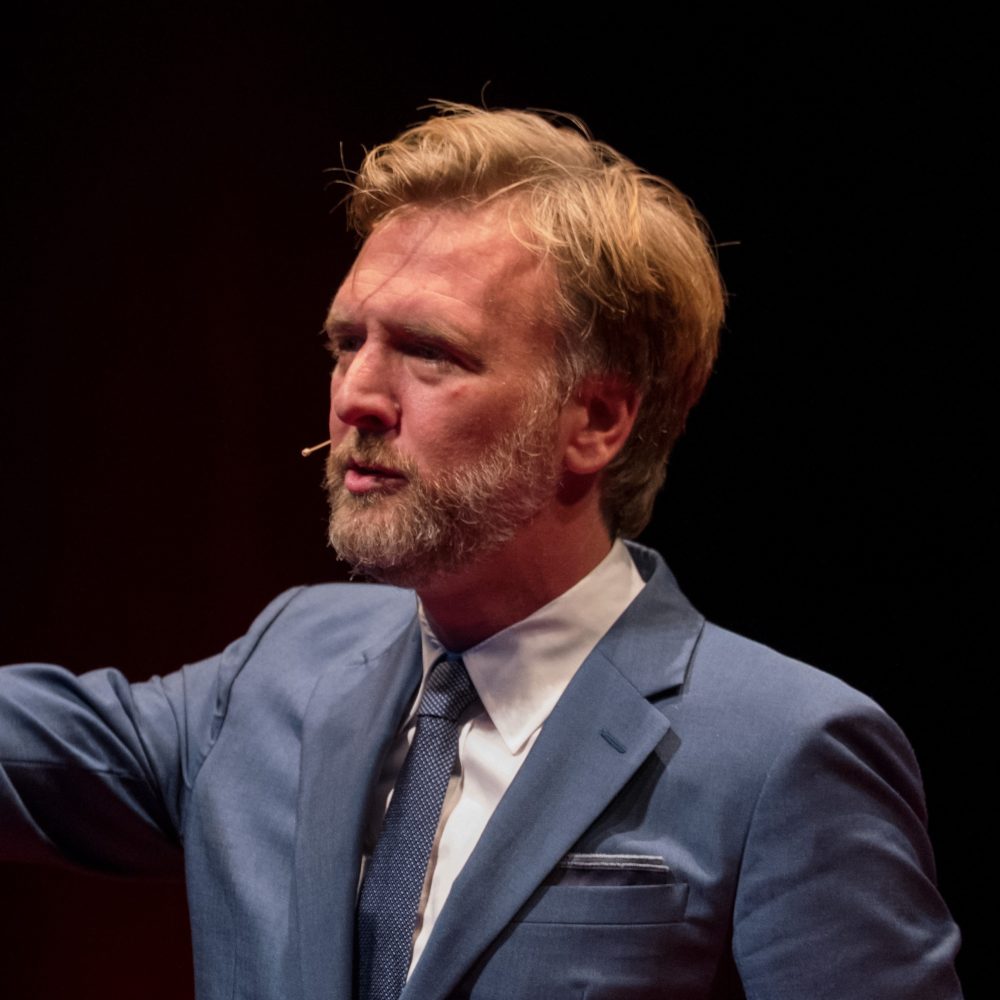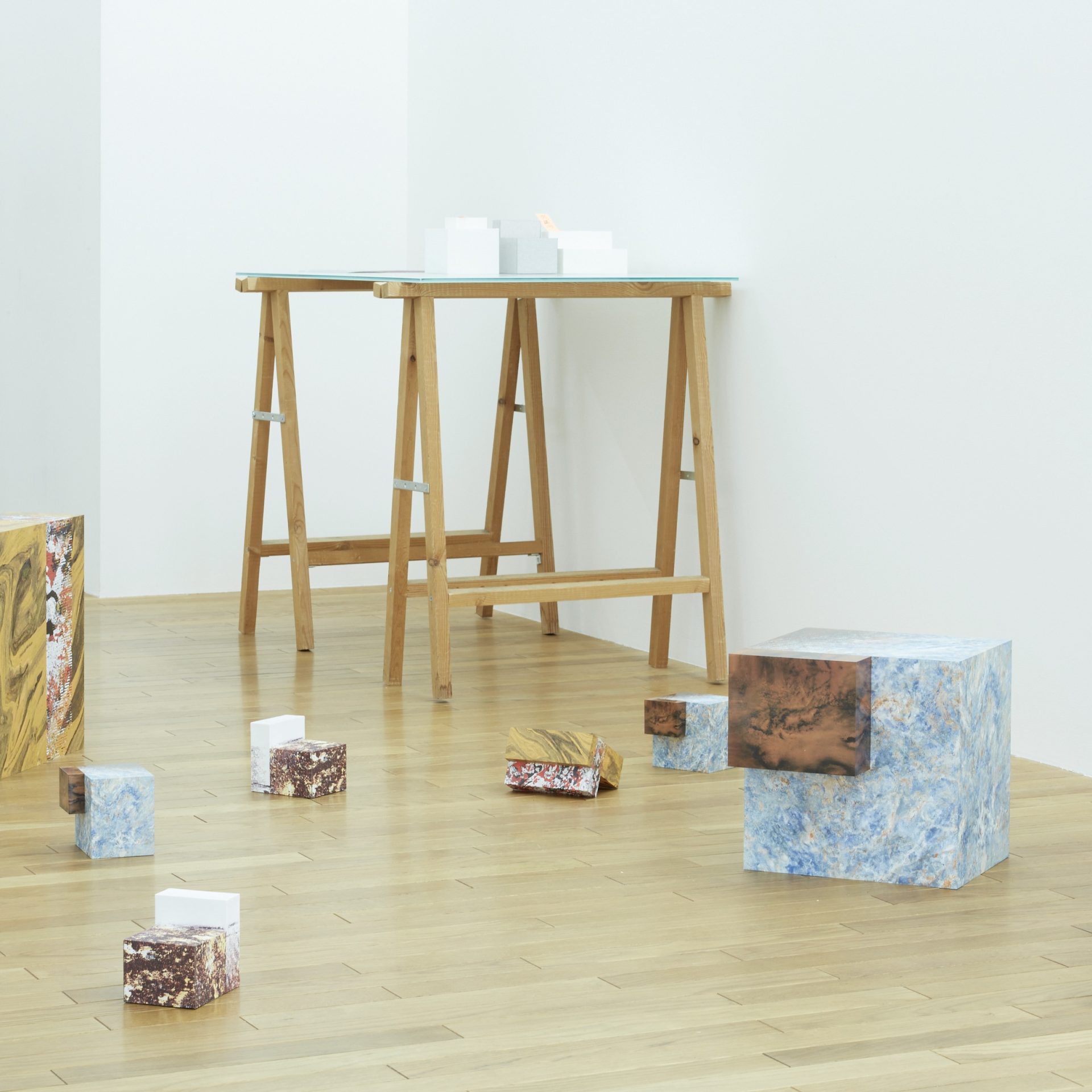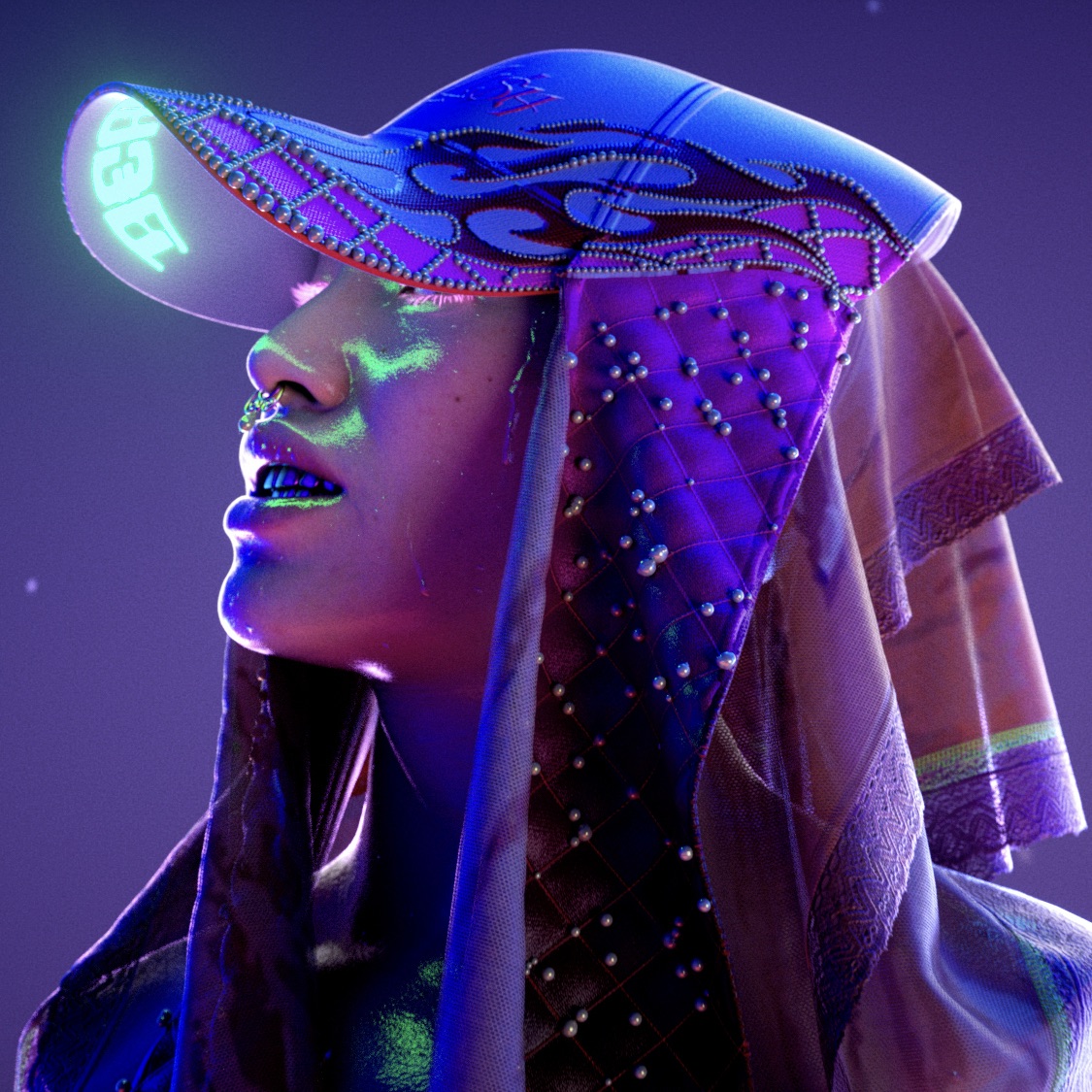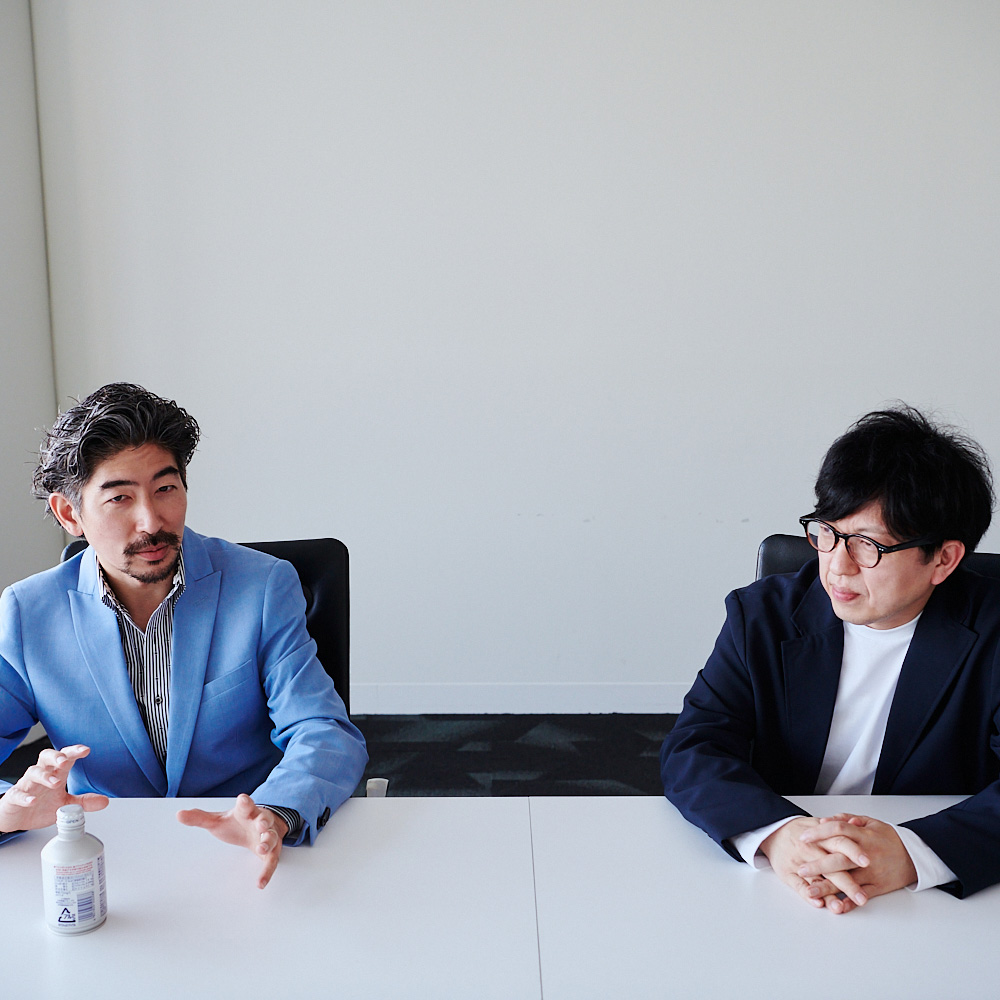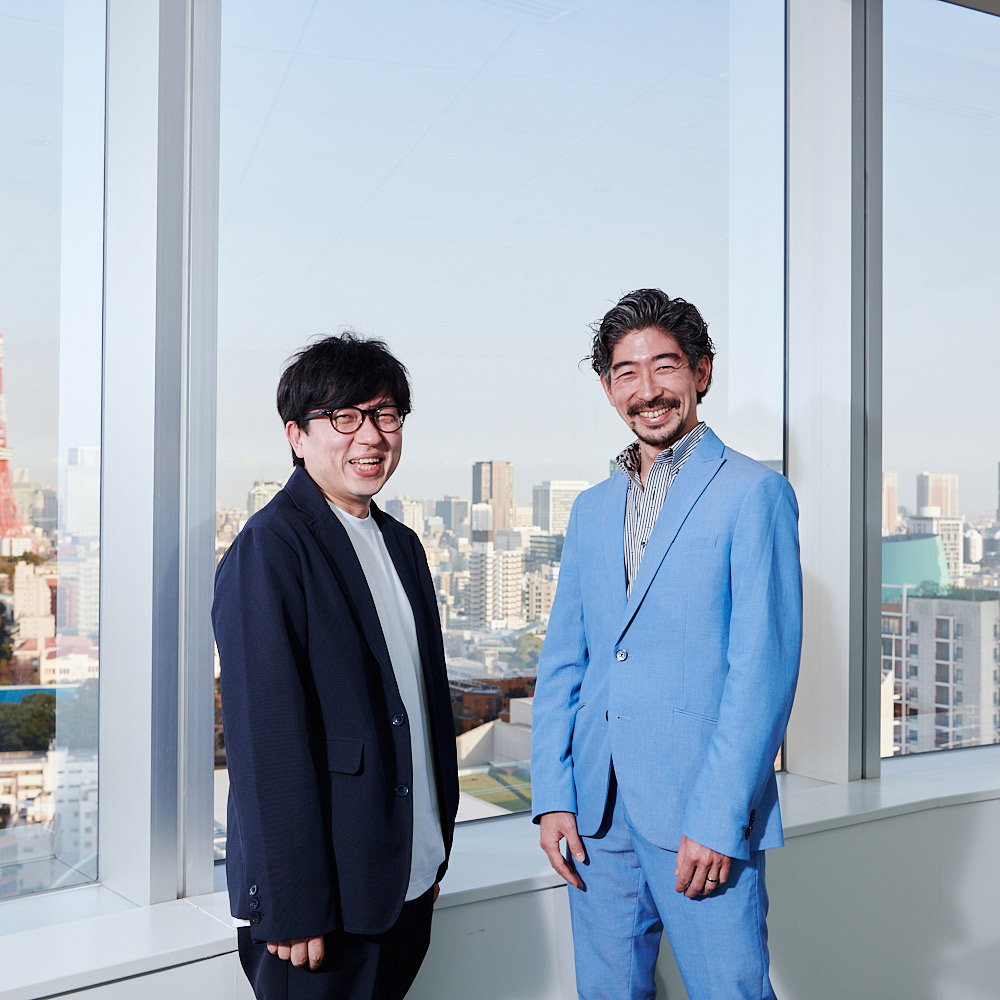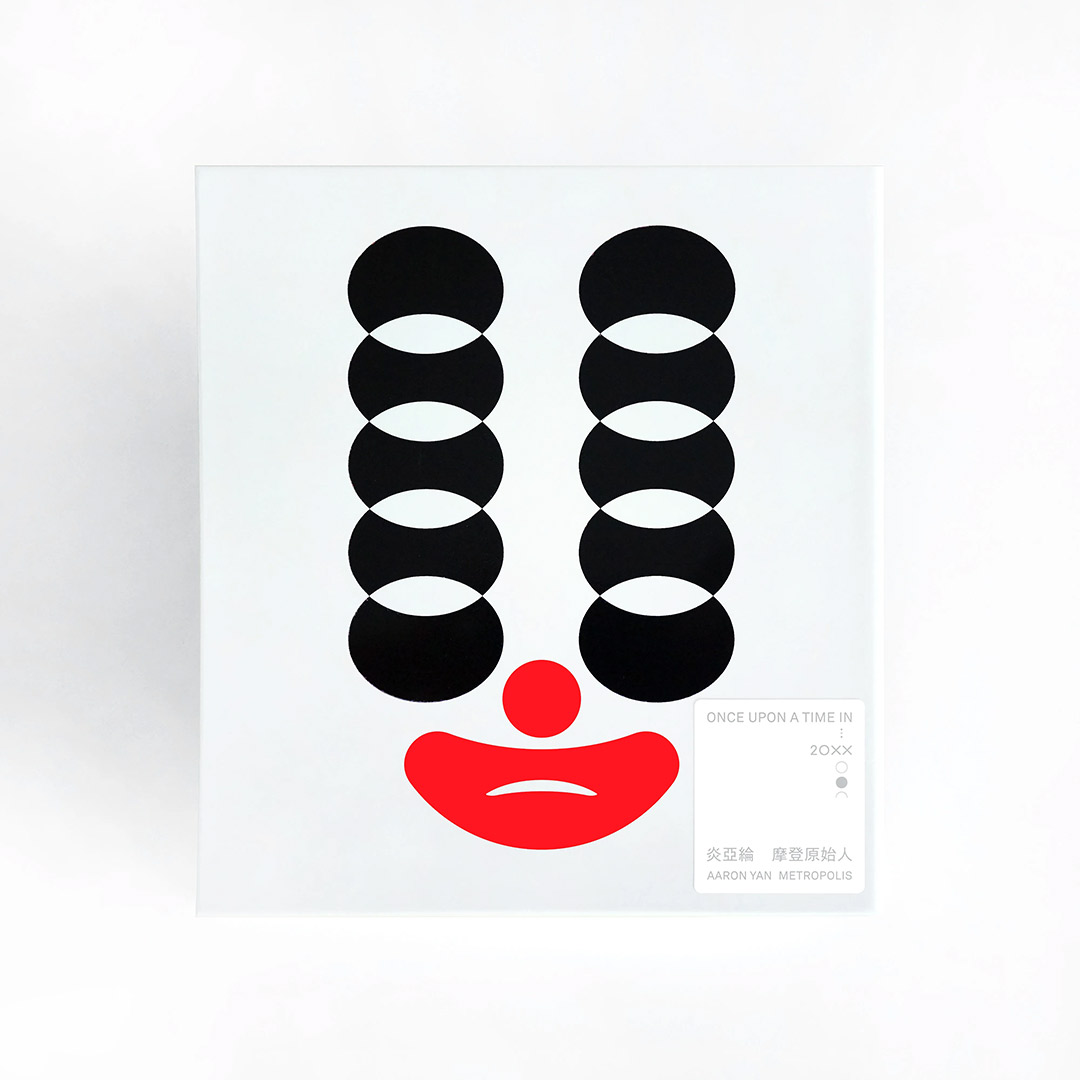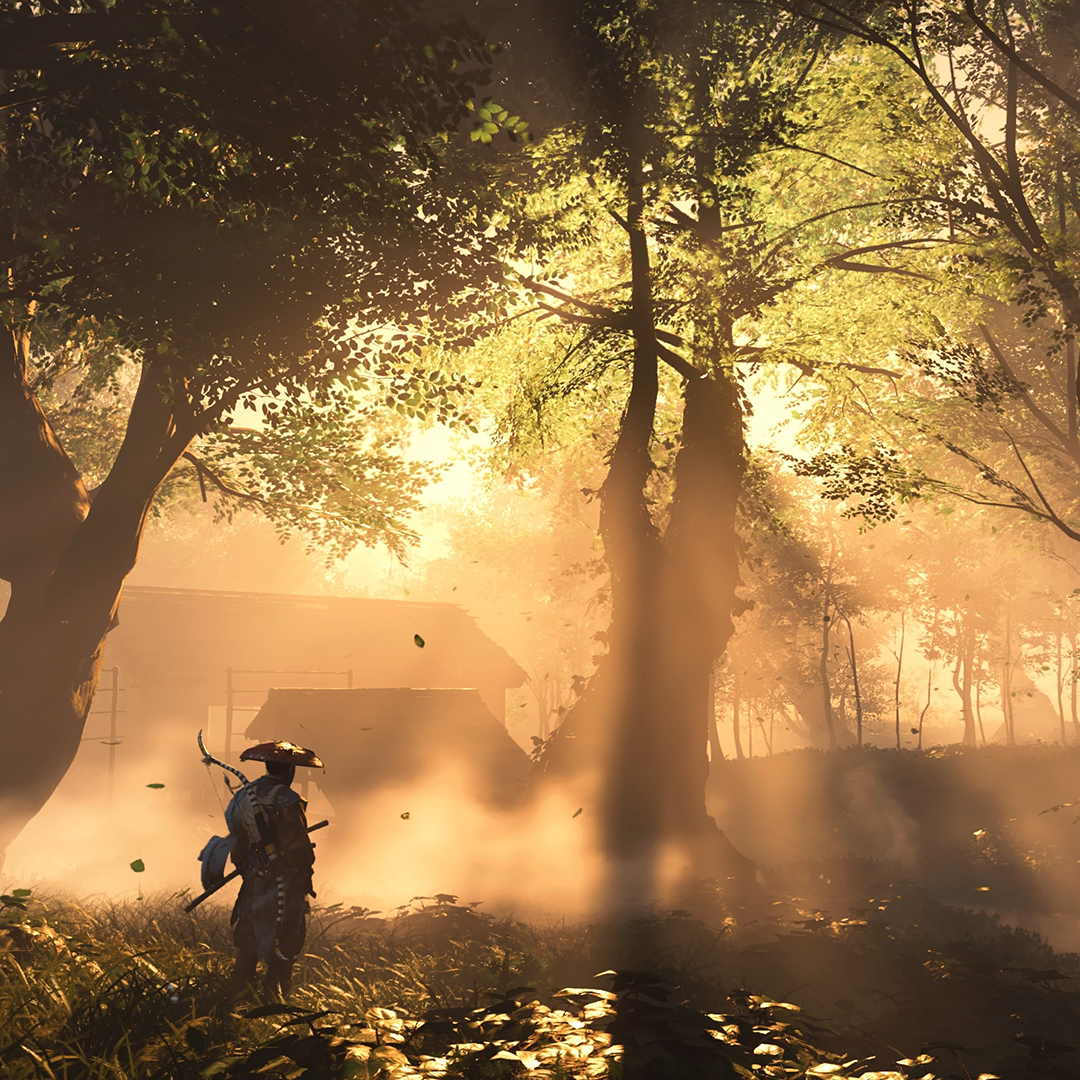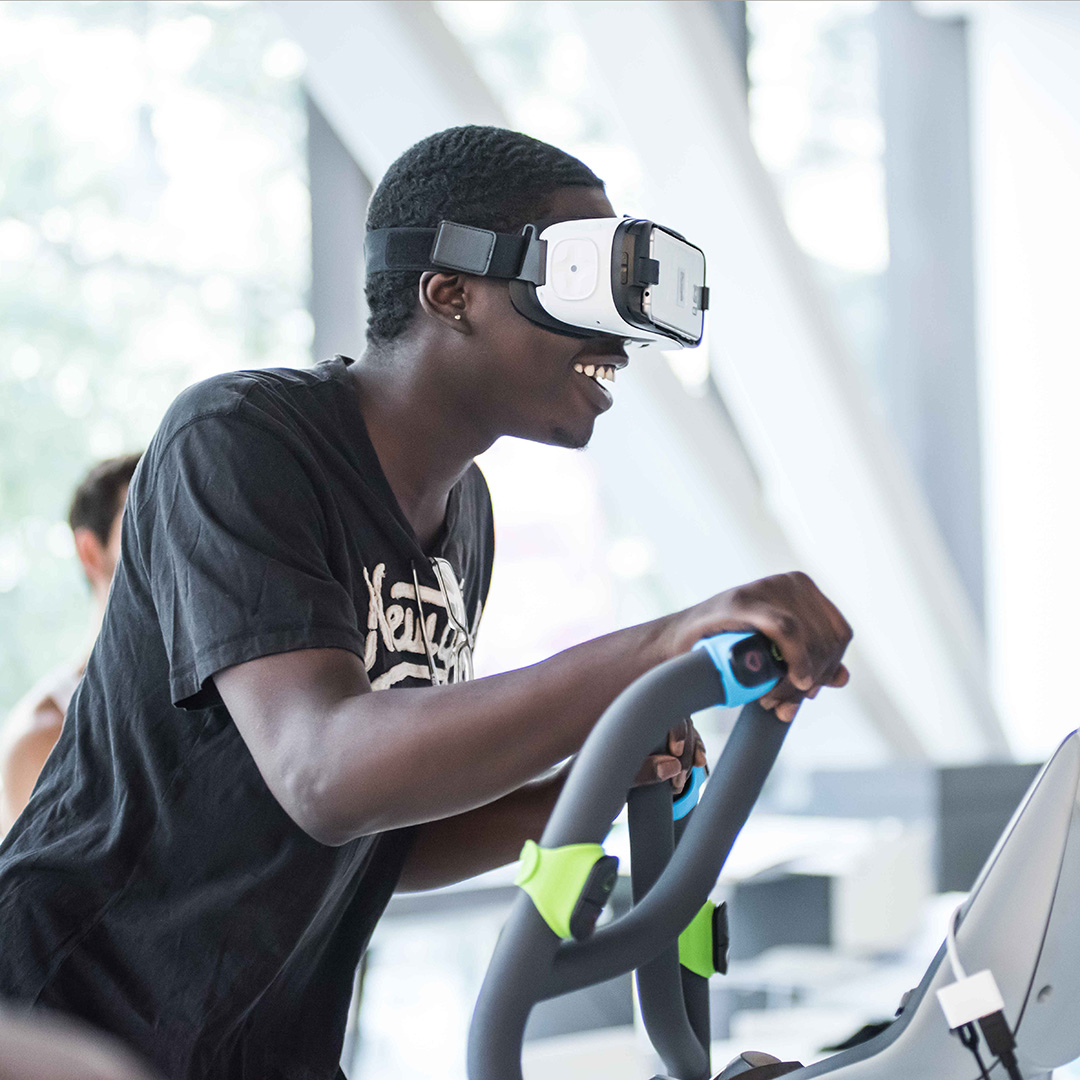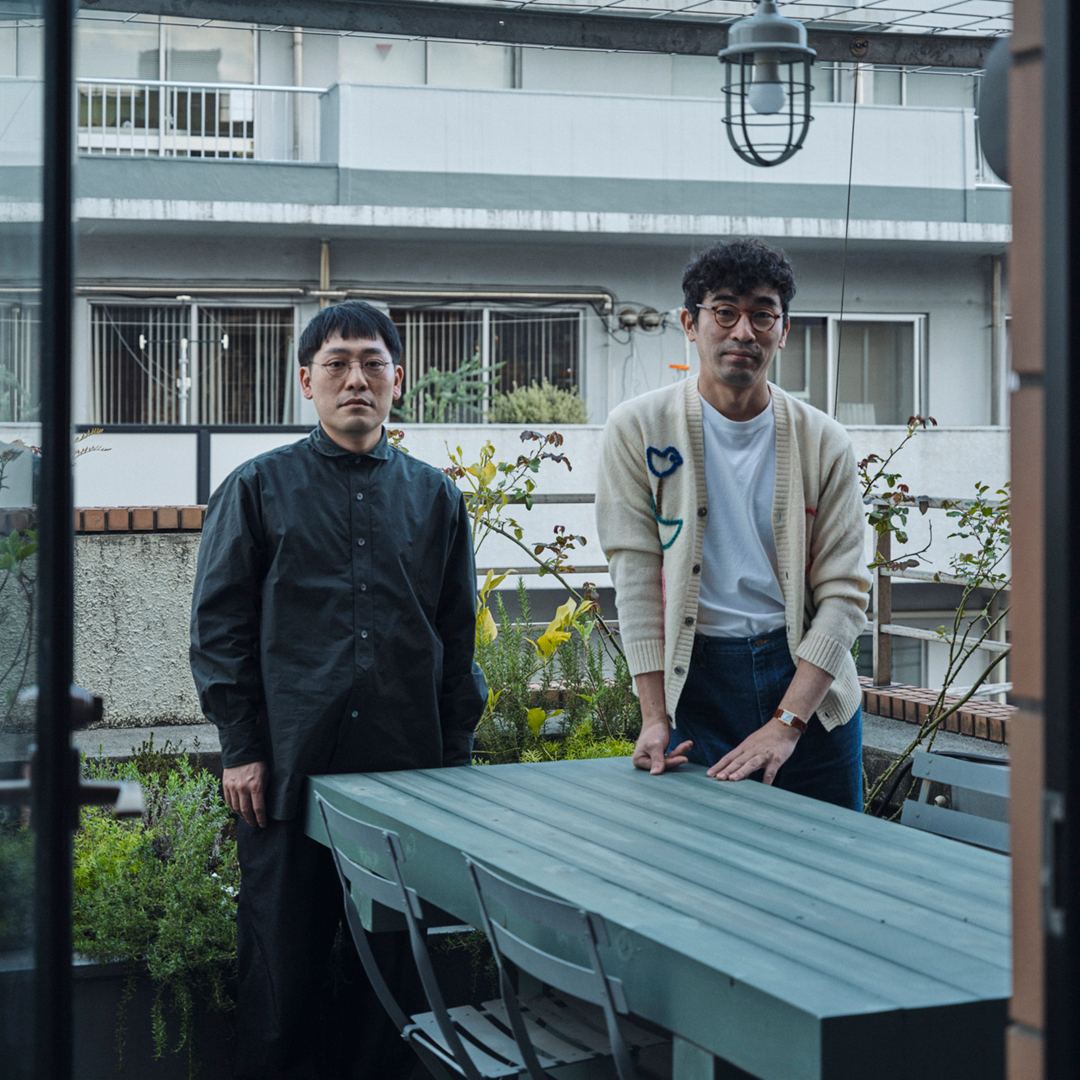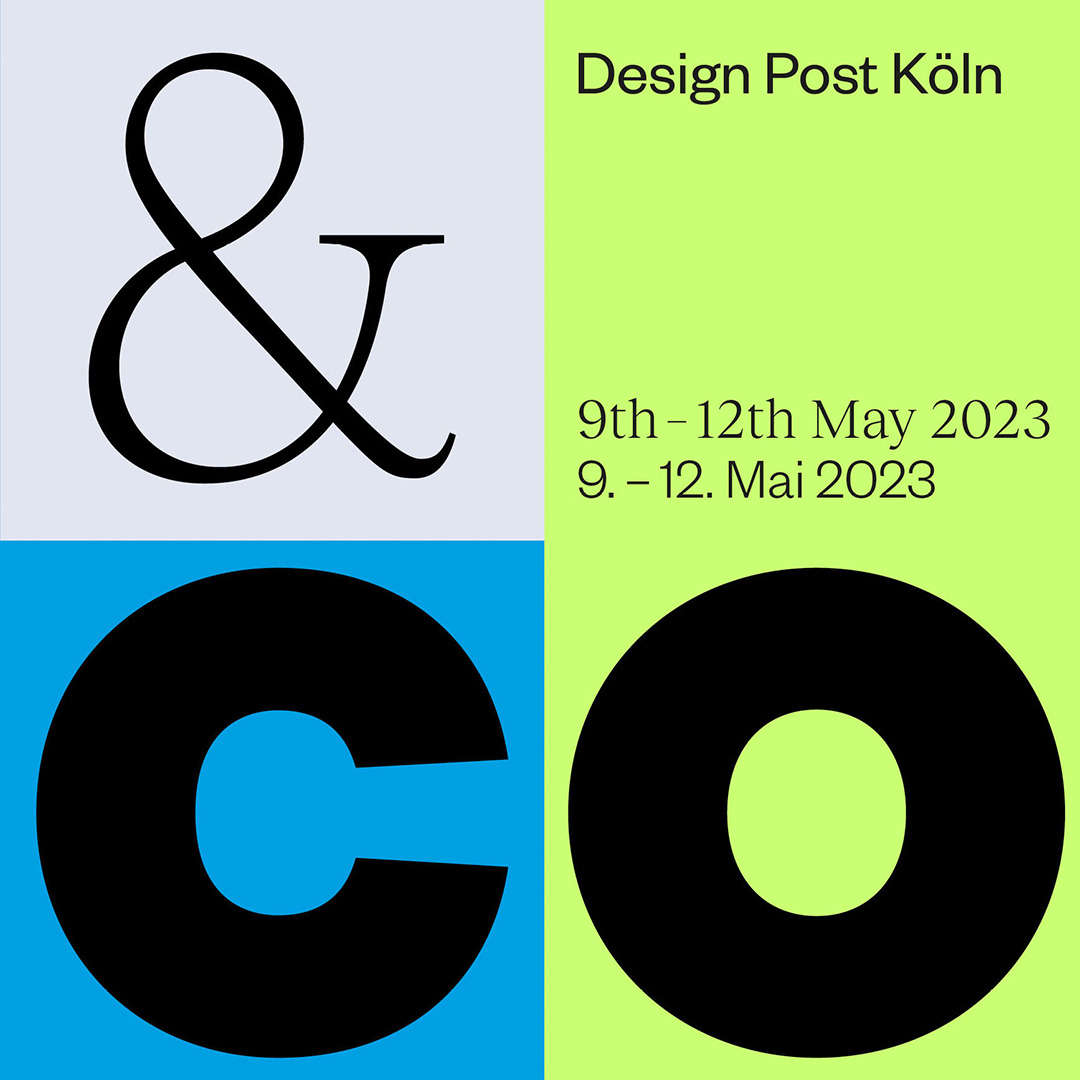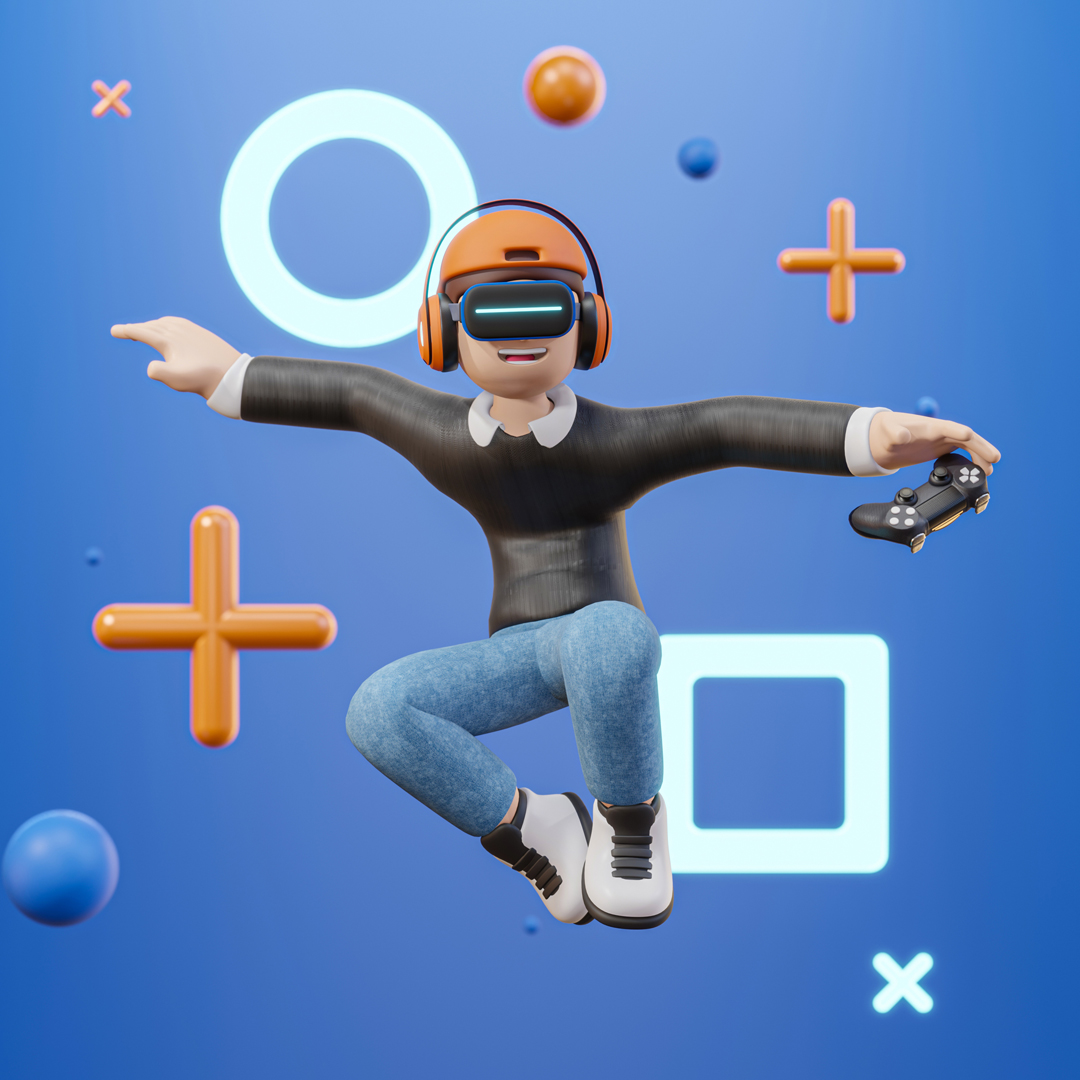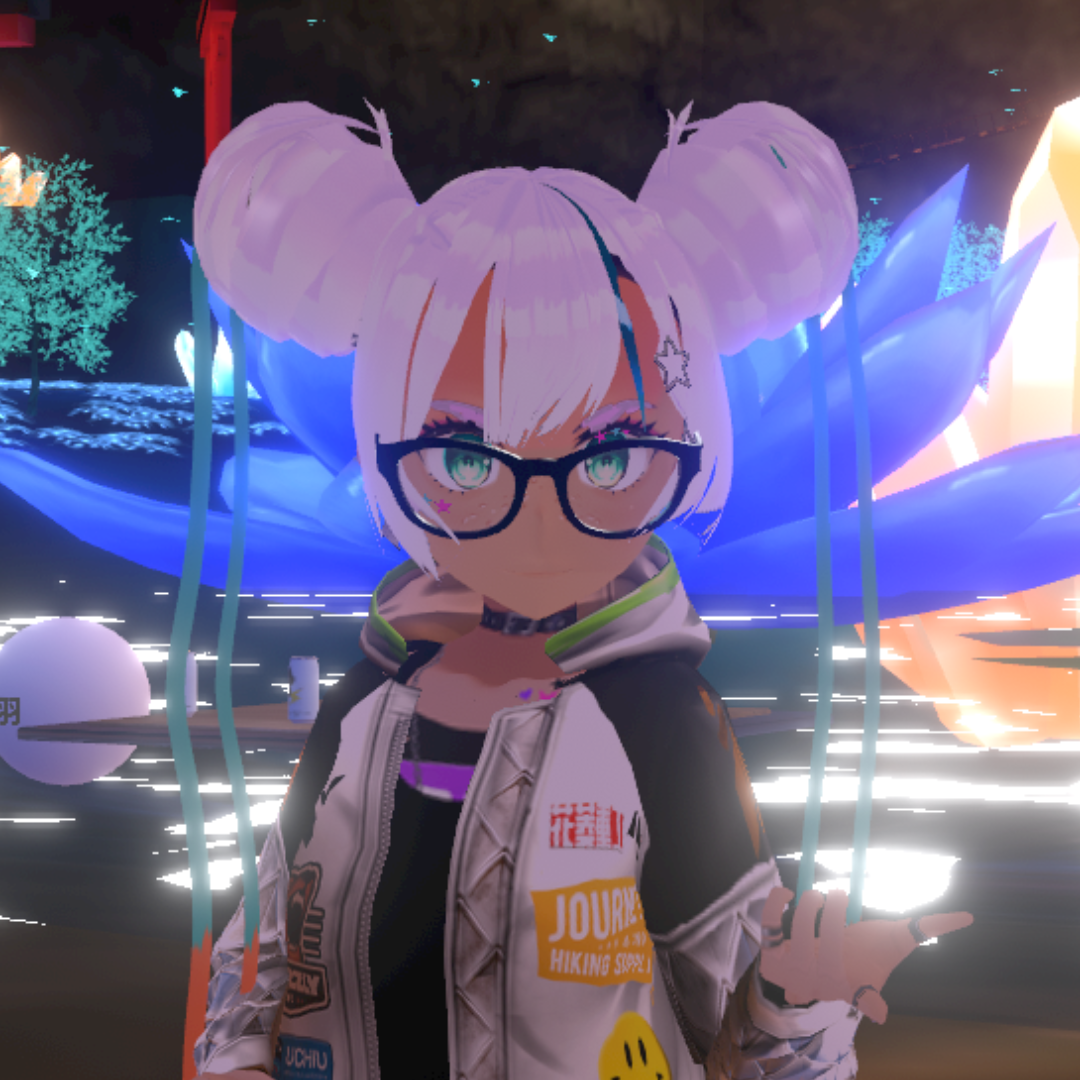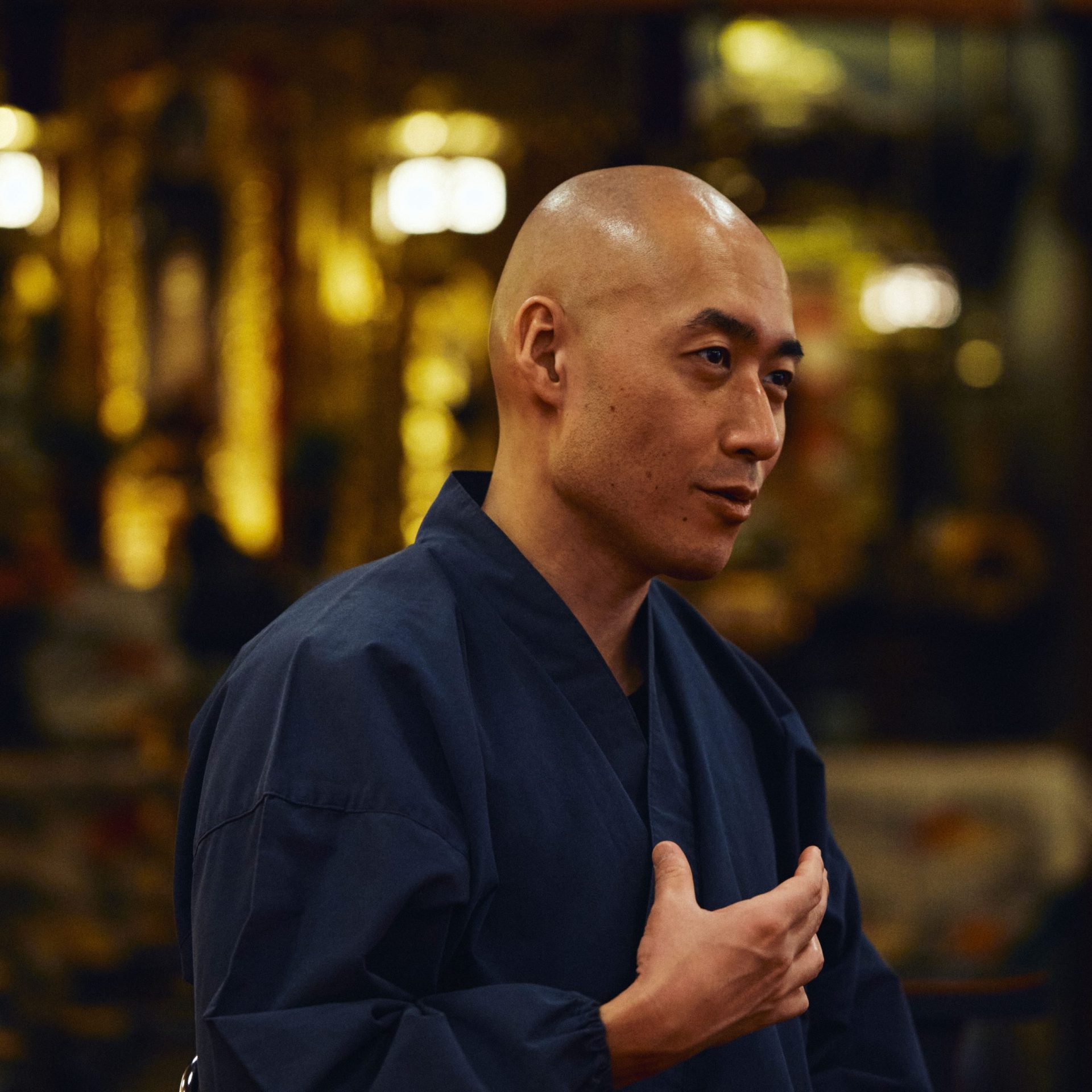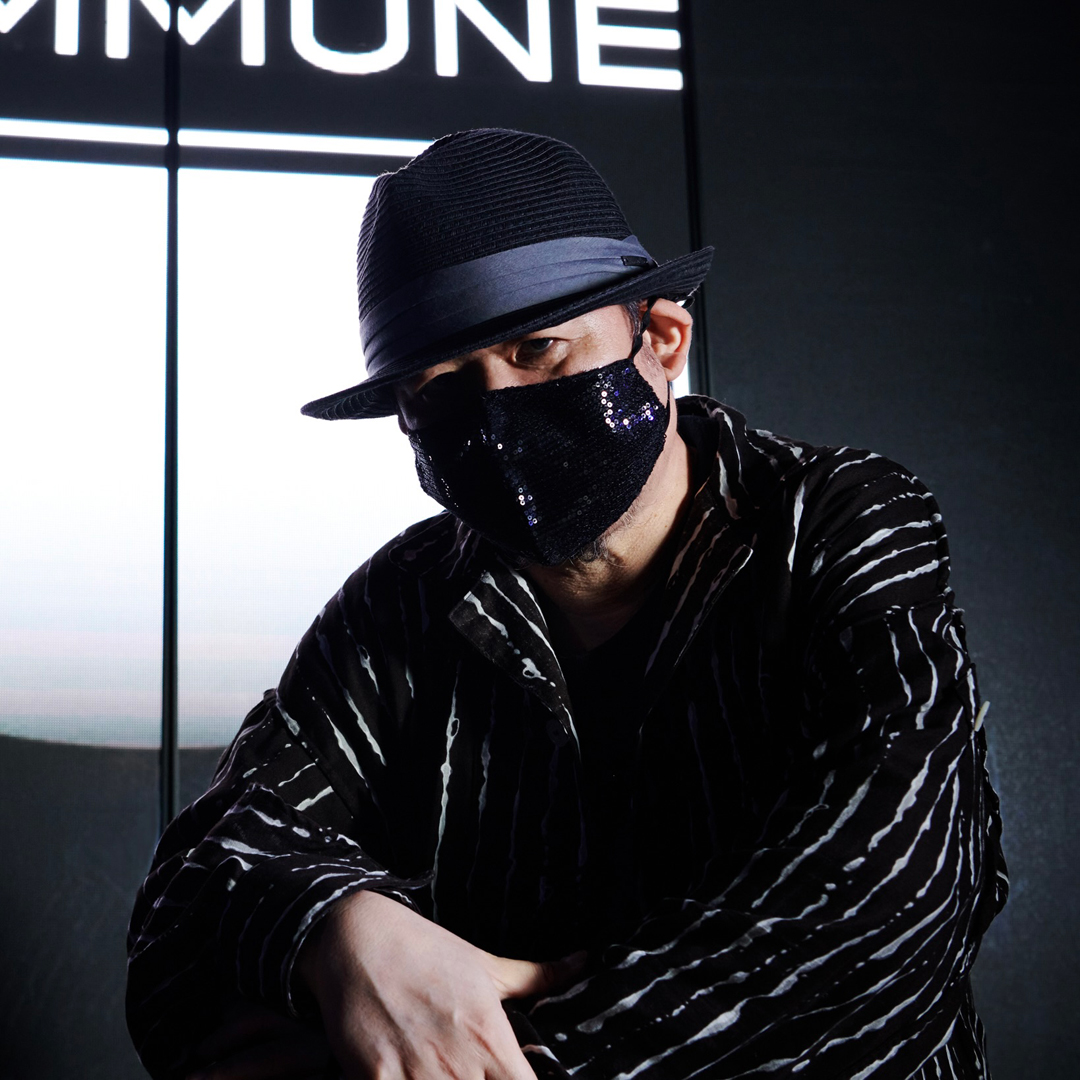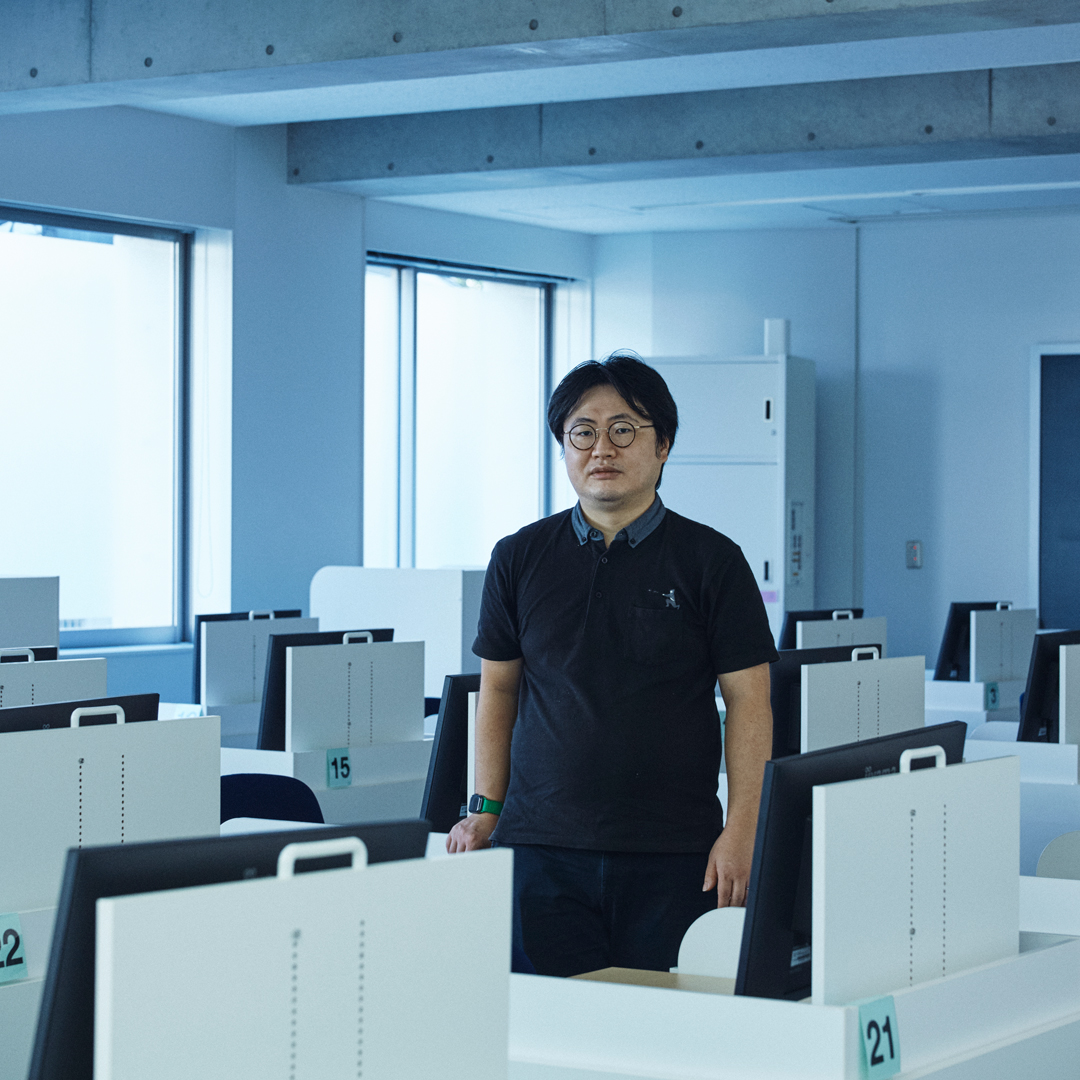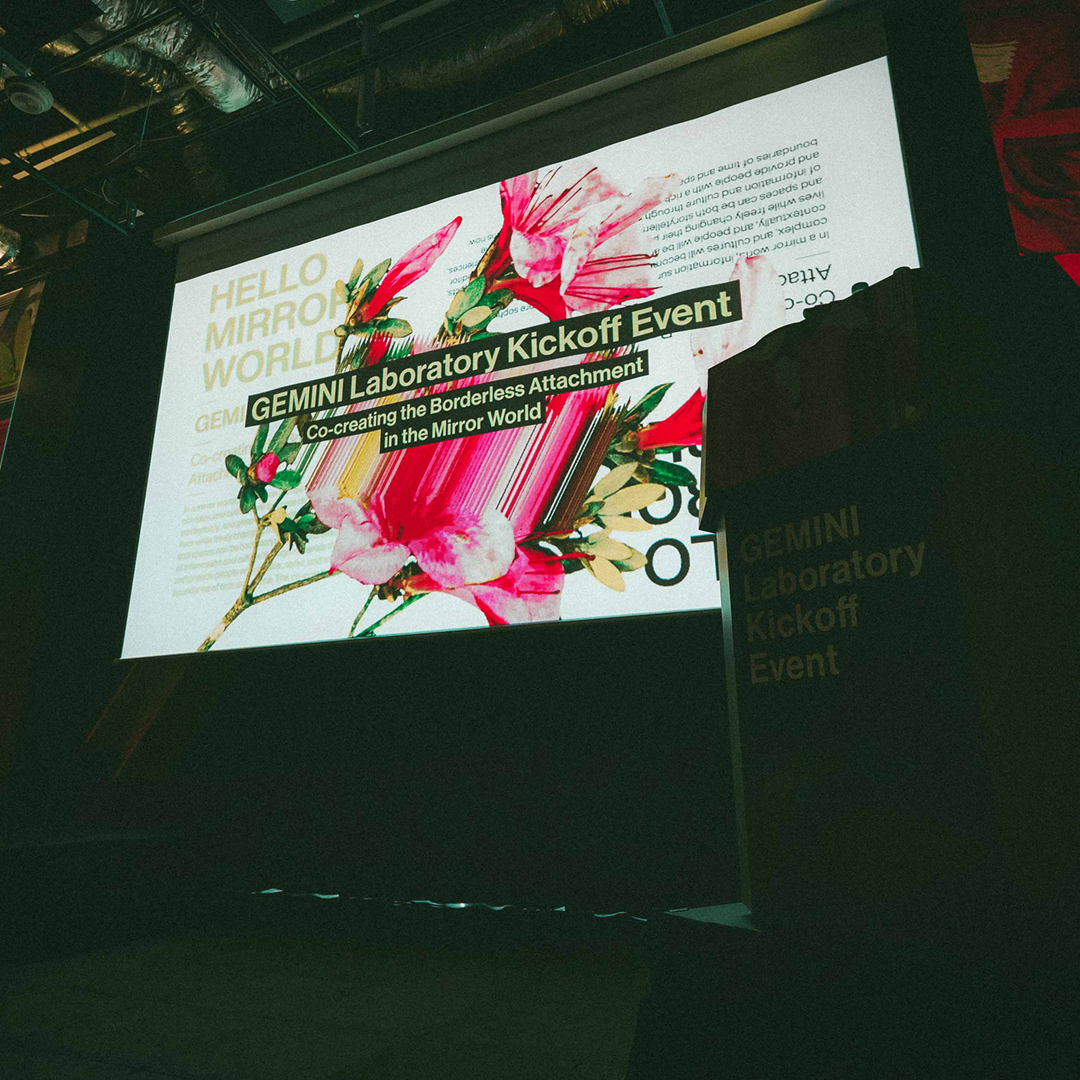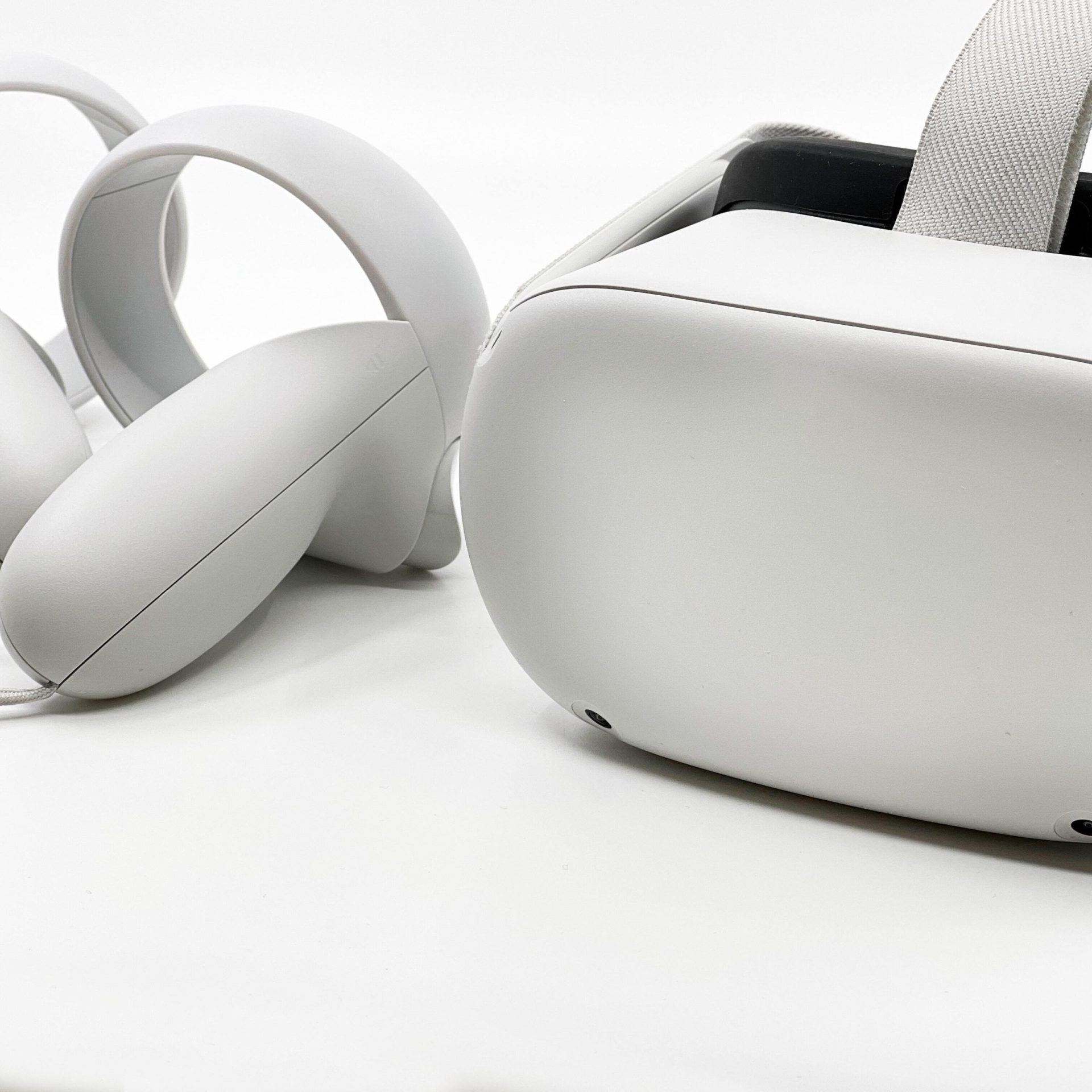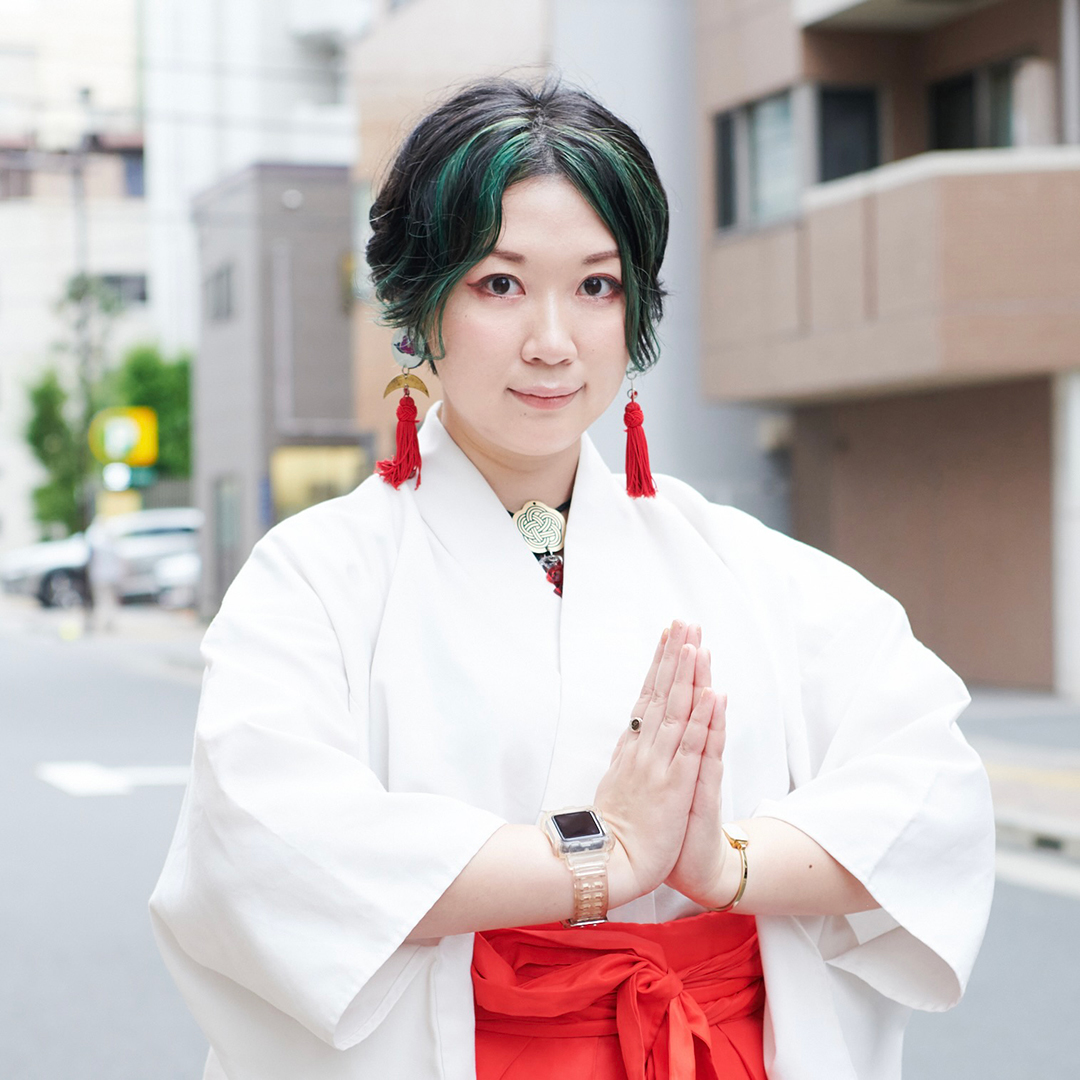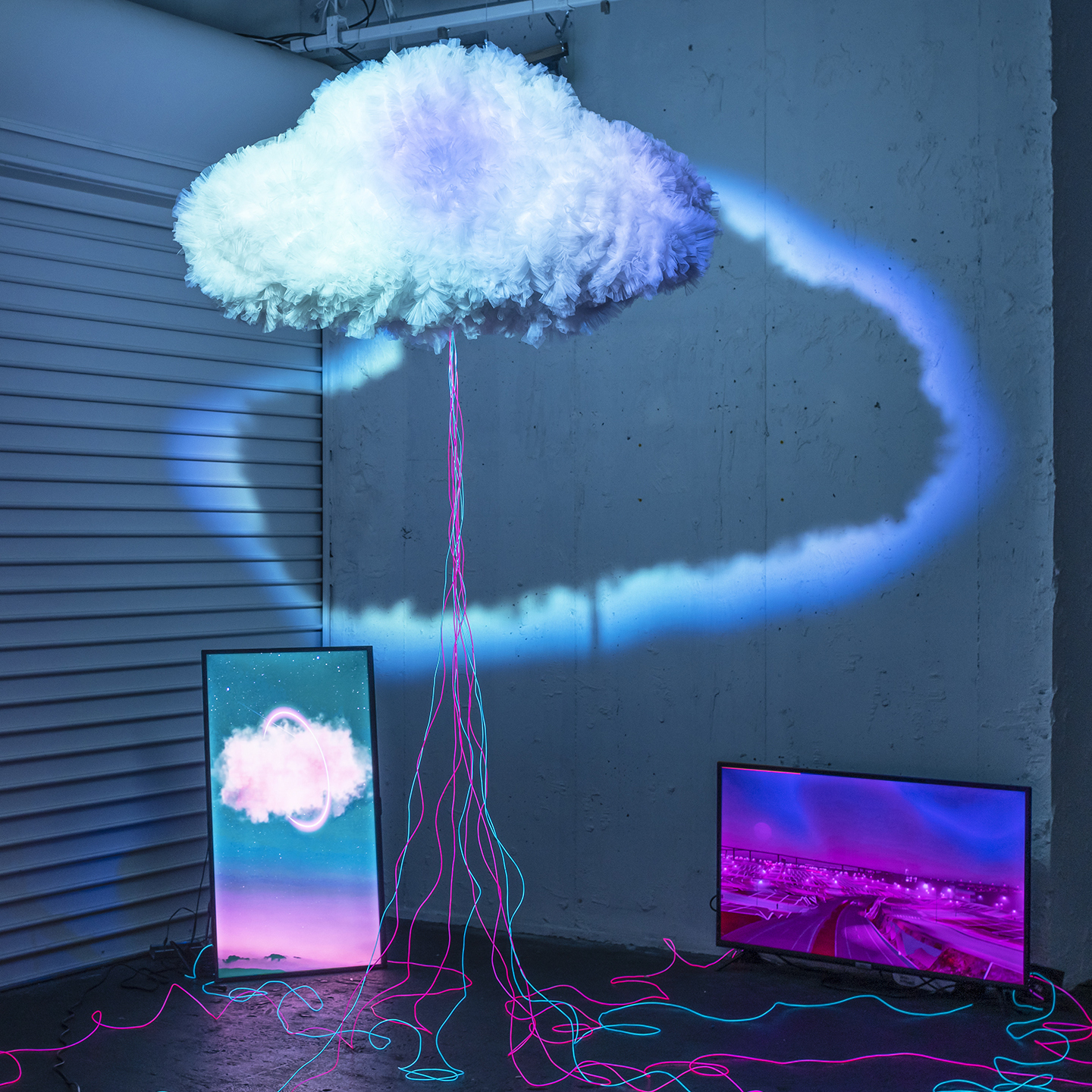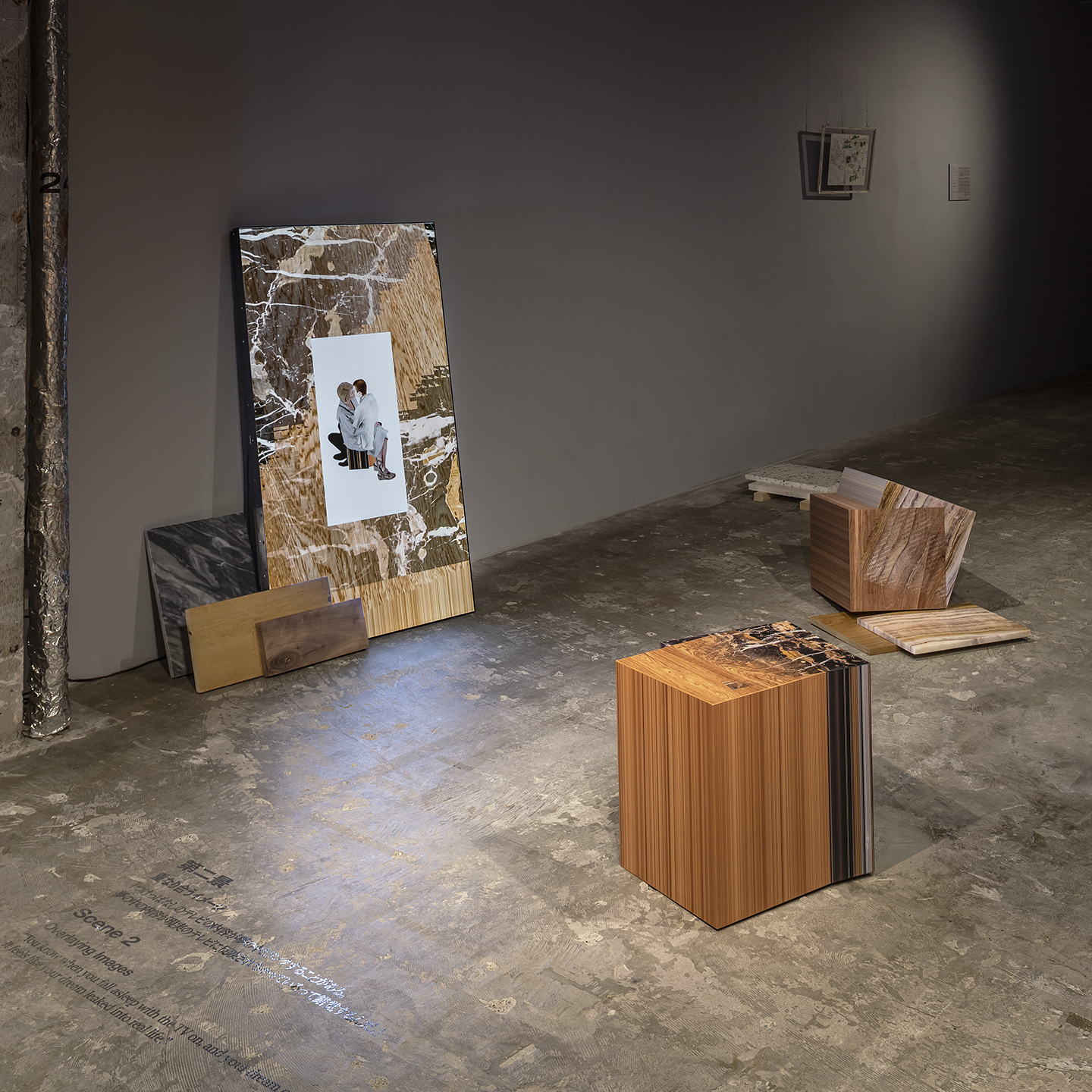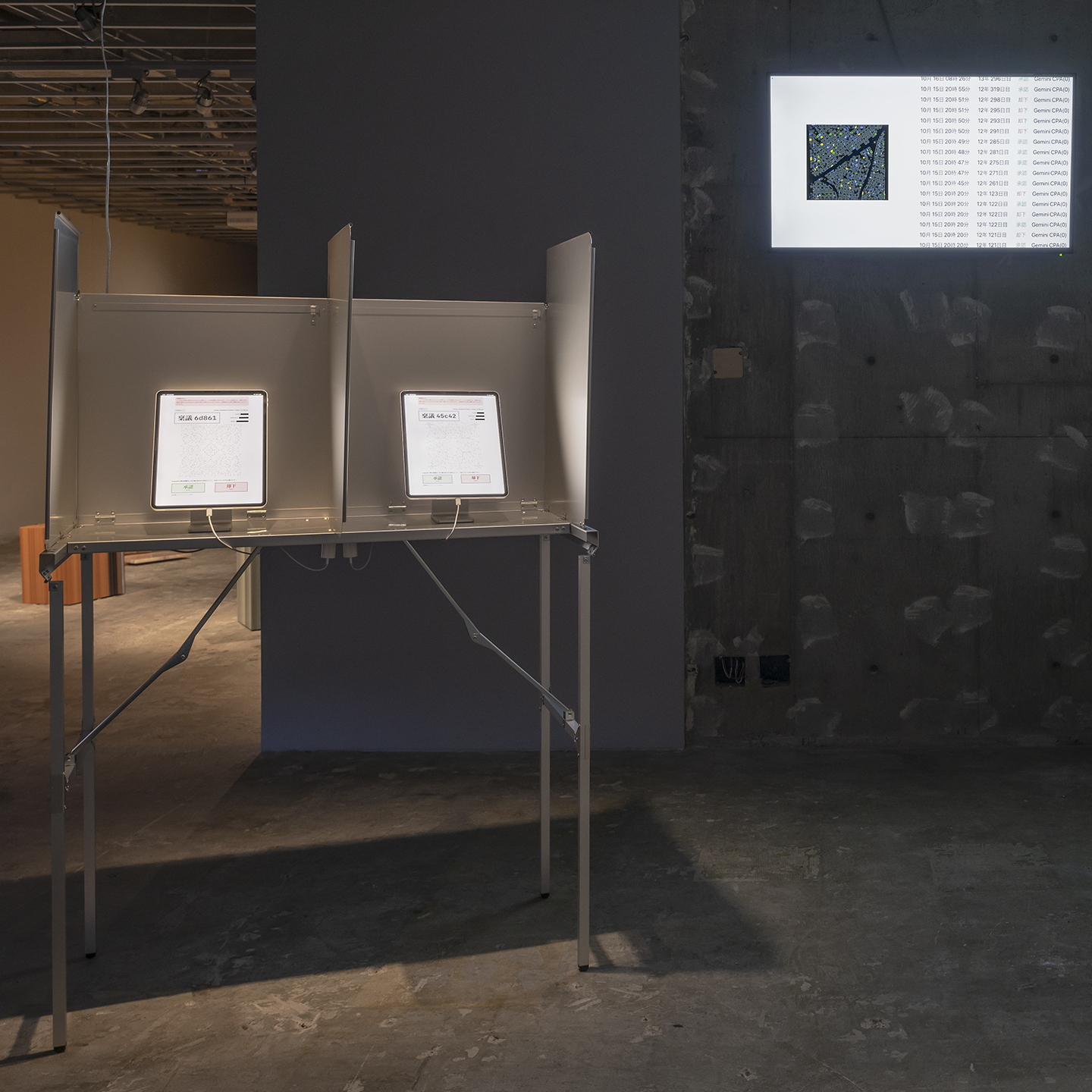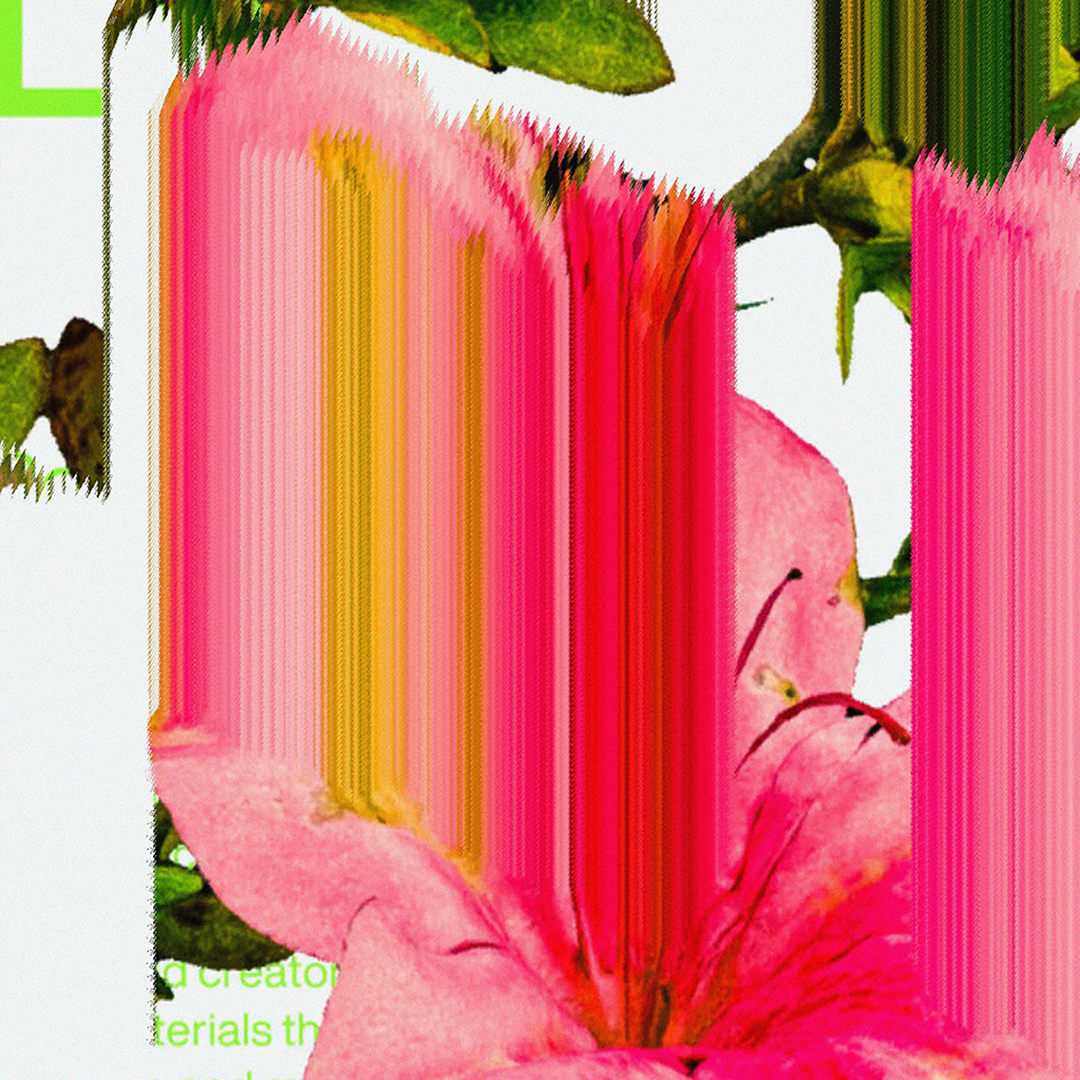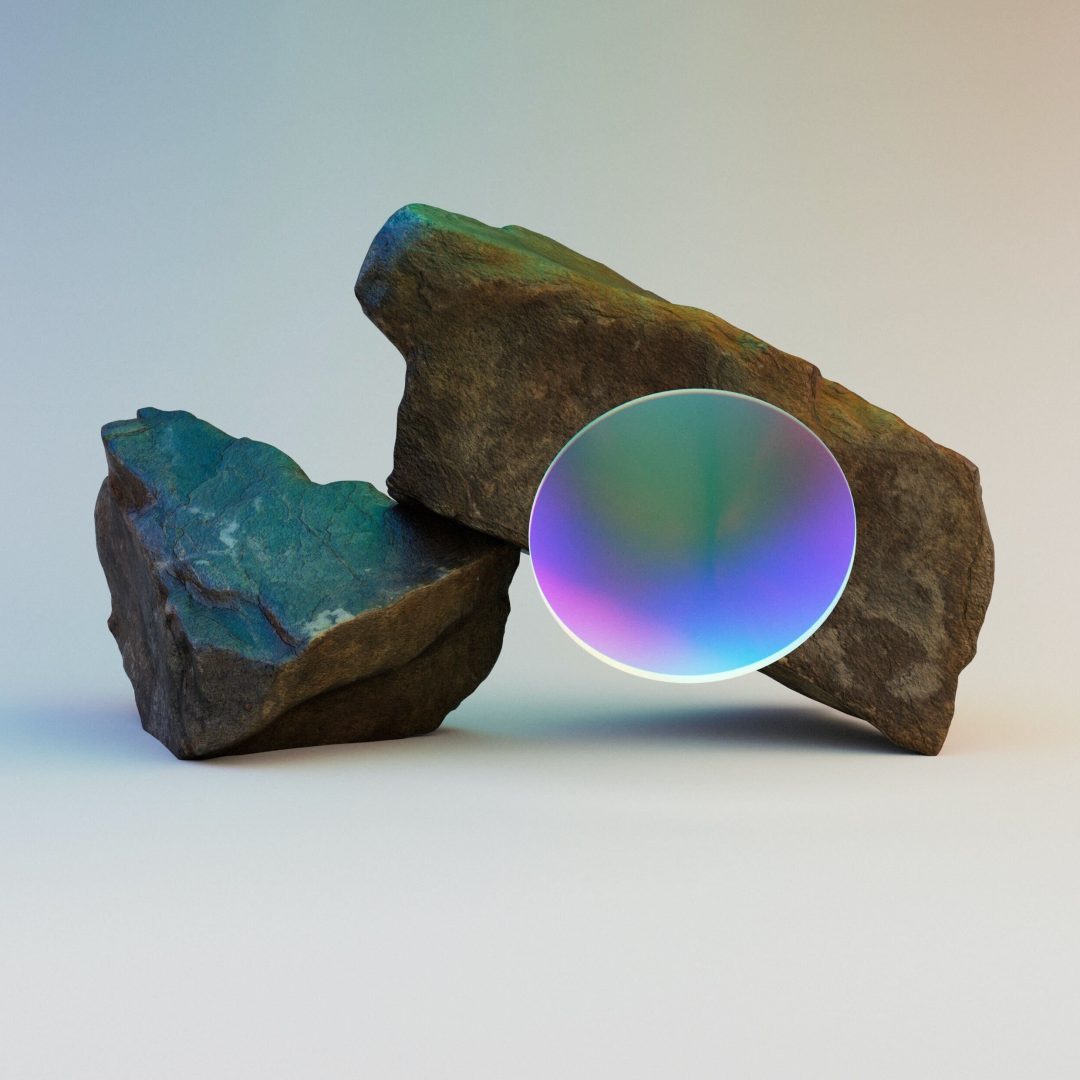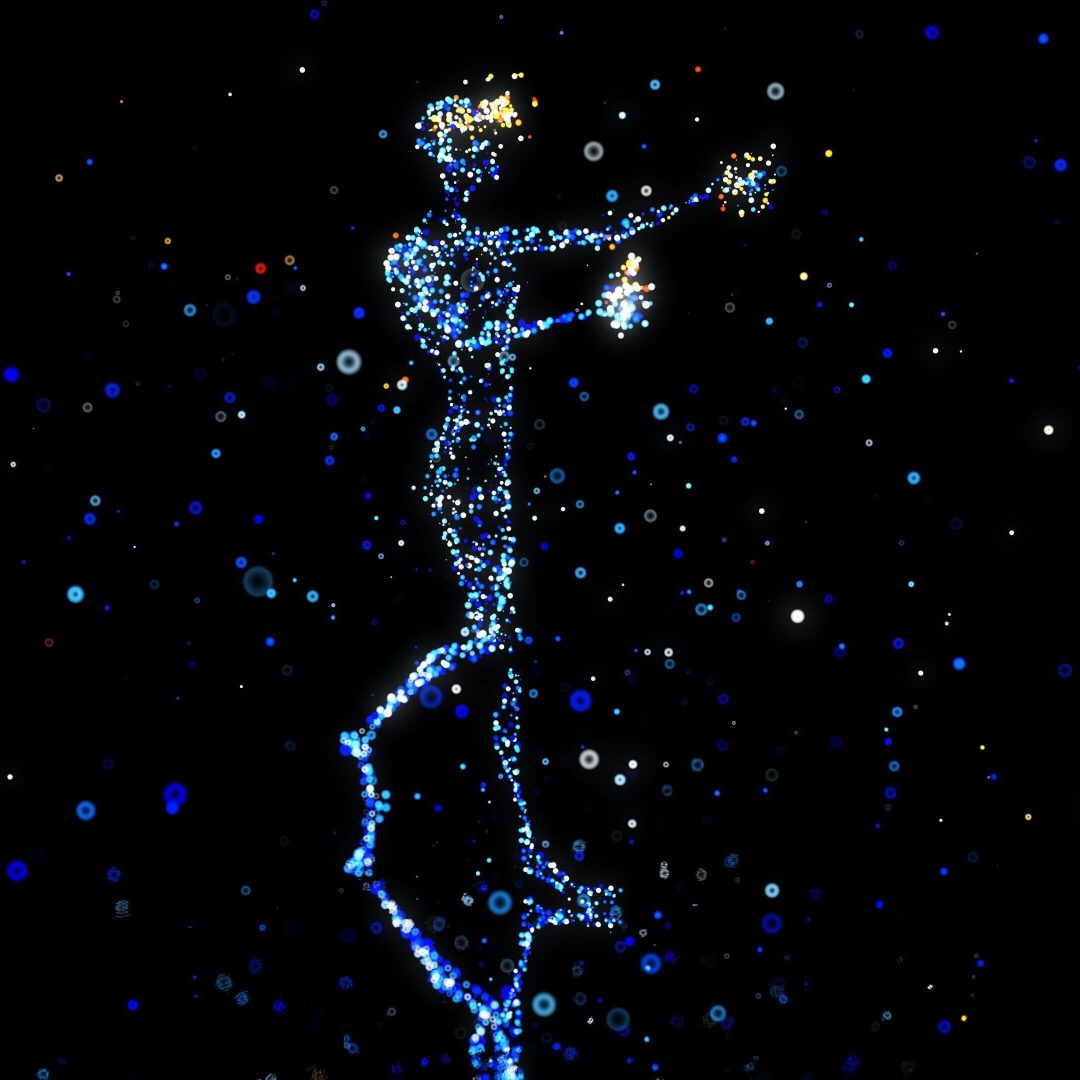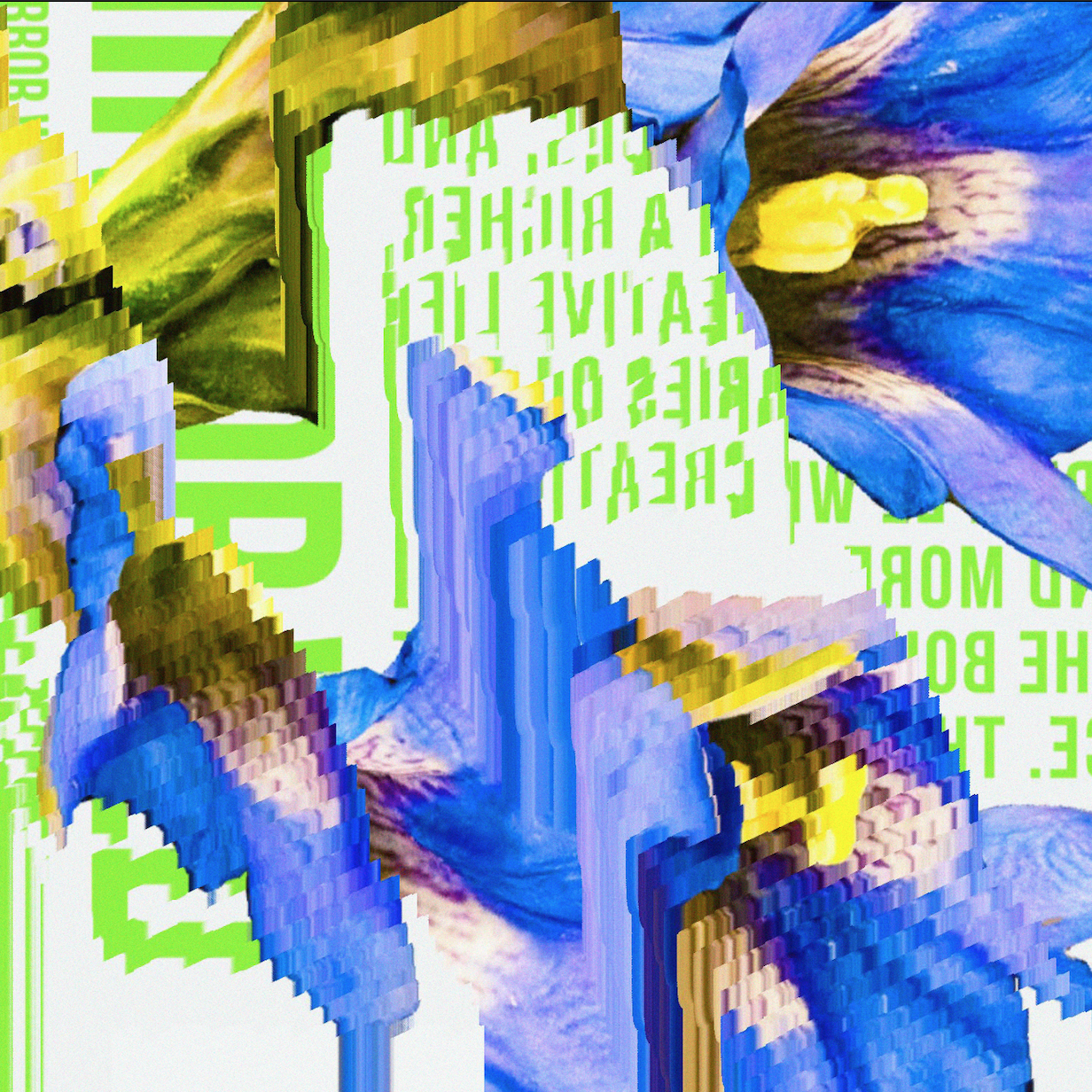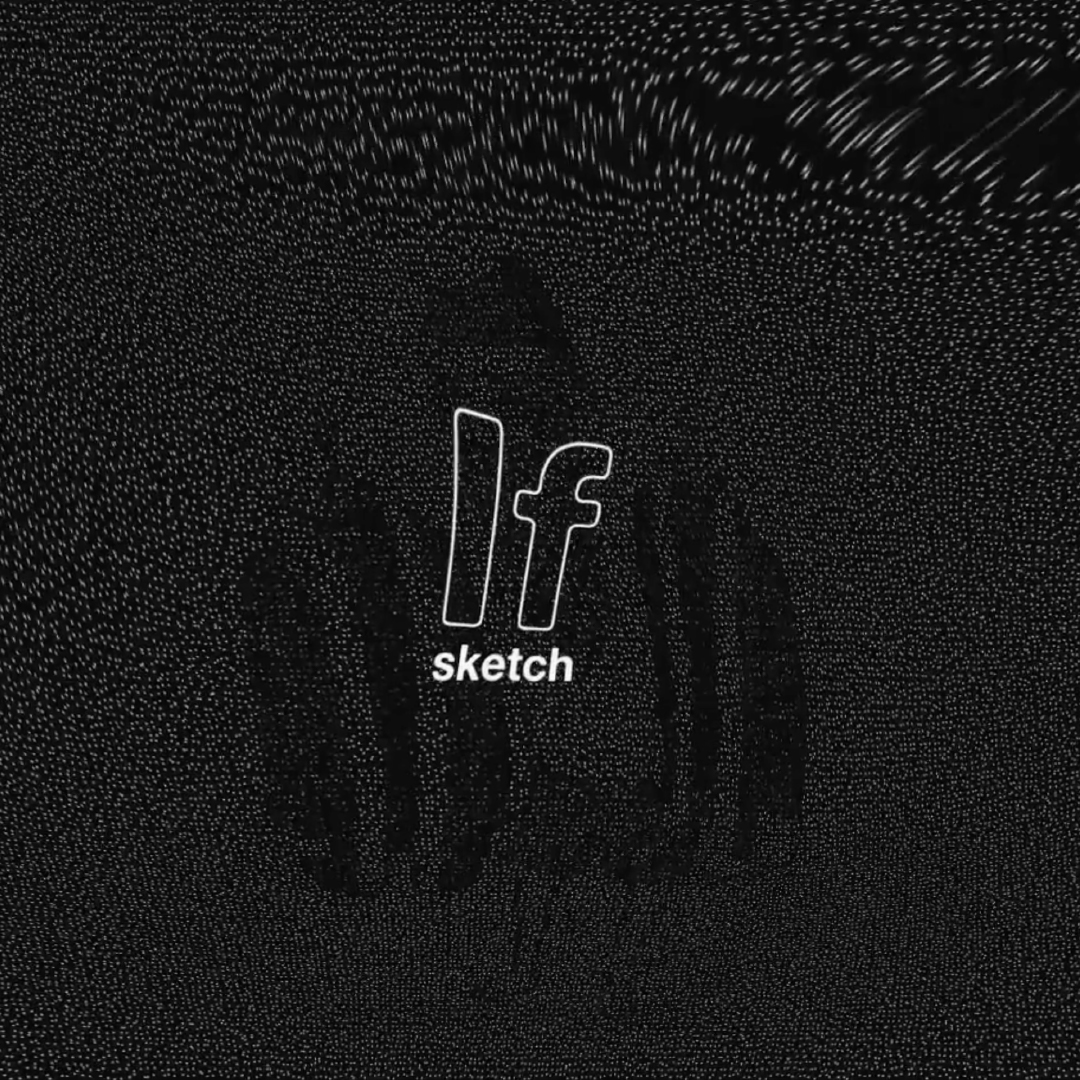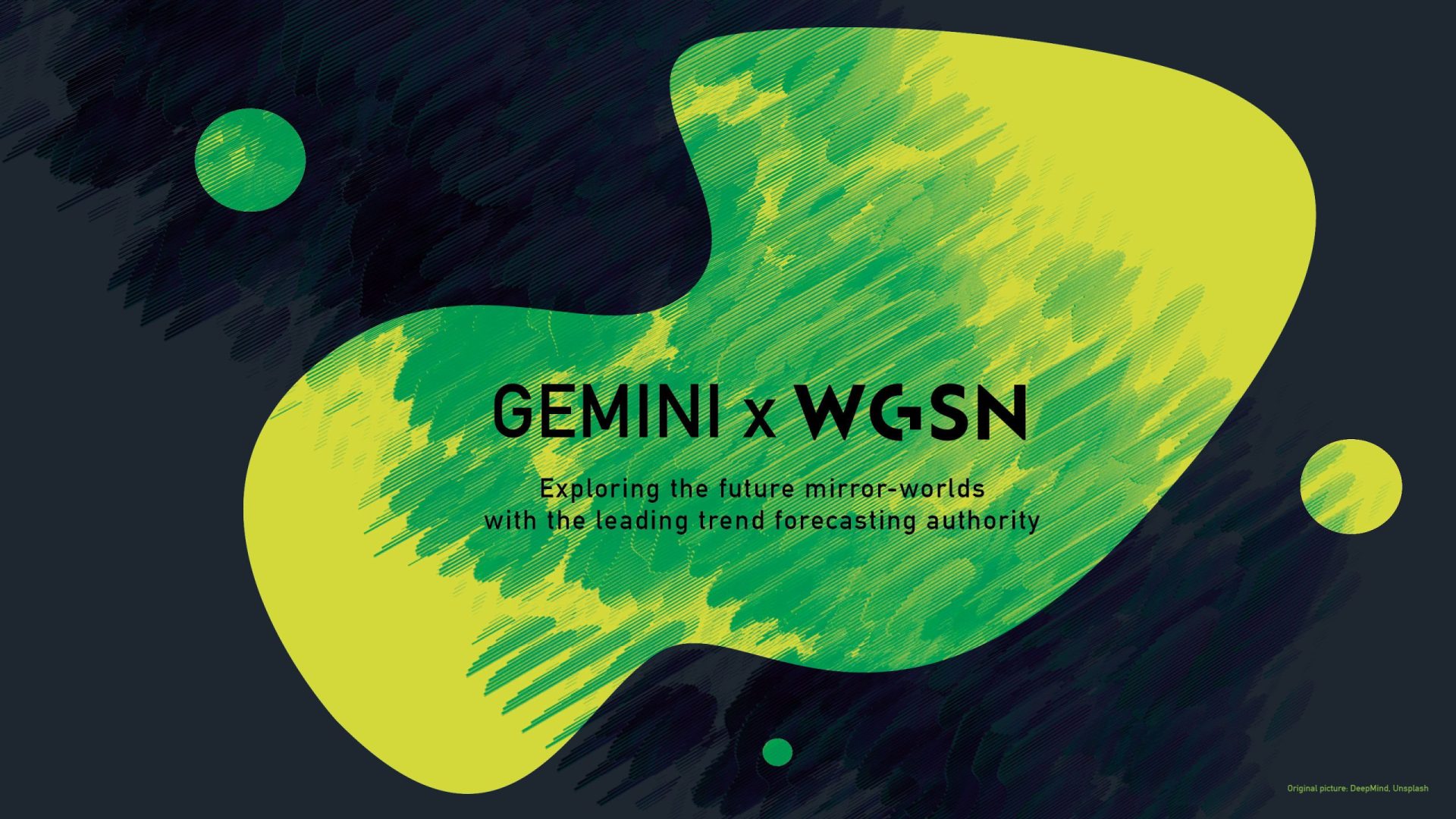Double Object, by SUNAKI Inc., center Inc. and GEMINI Laboratory, is an experimental project that explores the relationship between real and digital space. Artists and researchers create works that take as their starting point the explorations that are possible only with digital technology and the unexpected phenomena that arise during such explorations and bring them into real space.
Yoshihisa Tanaka, who is participating in this project, is a graphic designer and is also known as part of Nerhol, a duo of artists who create works using paper as a material. He critically reads the materiality and sociality of paper and has been presenting new ideas and concepts based on the materiality of paper. His stance can also be applied to the relationship between real and digital in Double Object.
This interview is a transcript and reconstruction of the workshop and talk event Visuality/Materiality organized by Taichi Sunayama (SUNAKI Inc.), an artist who is a member of the project as well as Tanaka, at Kyoto City University of Arts in December 2023. Through the experiments Tanaka has been engaged in, we would like to touch upon some of the possibilities of paper and digital media since the popularization of the Internet.
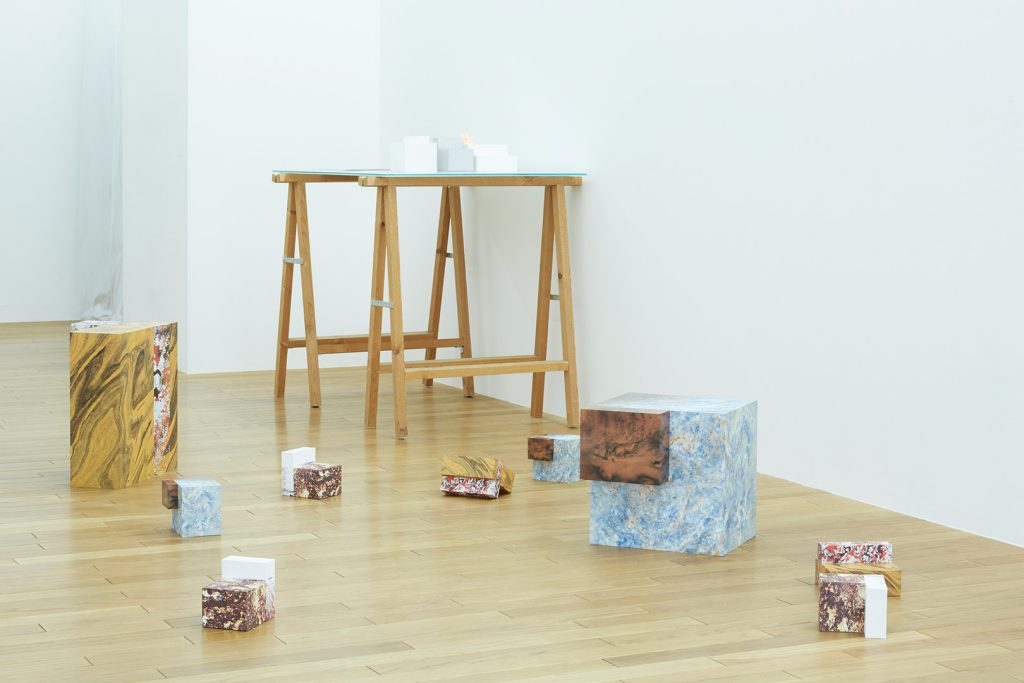
Relationship between visuality and materiality questioned by Nerhol
ーI heard that the title of this talk event Visuality/Materiality was proposed by you. What does it mean?
Tanaka: My two interests are precisely “visuality” and “materiality”. And I have always had an interest in paper media.
In the art duo Nerhol, in which he works with Ryuta Iida (*), he presents works using photographs as material. By layering a series of portrait photographs taken in chronological order, he creates a sculptural material with the thickness of paper. He treats a photograph of a person as equal to paper as a visual support, and at the same time, he sees it as a material as well.
*Born in 1981 in Shizuoka Prefecture. Sculptor. Graduated from Tokyo University of the Arts Graduate School, Department of Intermedia Art, in 2014.

ーYour work became widely known through these activities, didn’t they?
Tanaka: In the work titled Misunderstanding Focus, I use a series of about 200 photos, and I start shooting by telling the subject not to move. I shoot for about three minutes with the flash, which puts a lot of pressure on the subject and causes them to move involuntarily.
Then, the person’s idiosyncrasies will gradually appear in the photos, which will be reflected in the structure of the work when the photos are layered up. This is what is referred to as a contour model in the architectural sense.
ーThe model is used to express the topography of a mountain, following the contour lines.
Tanaka: When you create in this way, you create a portrait that gives a different impression from a photo. I was interested in how people who do not know the subjects themselves would perceive their faces based on visual perception alone, and I wanted to pose this question through the work.
Upcycling New Balance Off-cuts into Washi Paper
ーYou are also involved in a project related to New Balance’s flagship product, the 574. I heard that you are making Japanese paper out of leather scraps and waste materials from the sneaker production process.
Tanaka: This project started from my interest in sneakers and how to take responsibility for paper as a designer. What surprised me about New Balance’s production process was the size variation of their sneakers. Basically, shoe sizes change in increments of 0.5 cm, but New Balance has a wider variety of sizes, and the shoe box size is also changed accordingly.
In the first place, the useful life of sneakers itself is not long, so this results in a surplus of scrap materials. I thought that it would be a little strange for this to continue in the future, so I launched a project to make new pairs of sneakers from discarded scraps. The parts are then re-created. We take the scraps, grind them into small pieces, return the material to its fibrous state, and then re-create each part by incorporating it with Japanese paper.
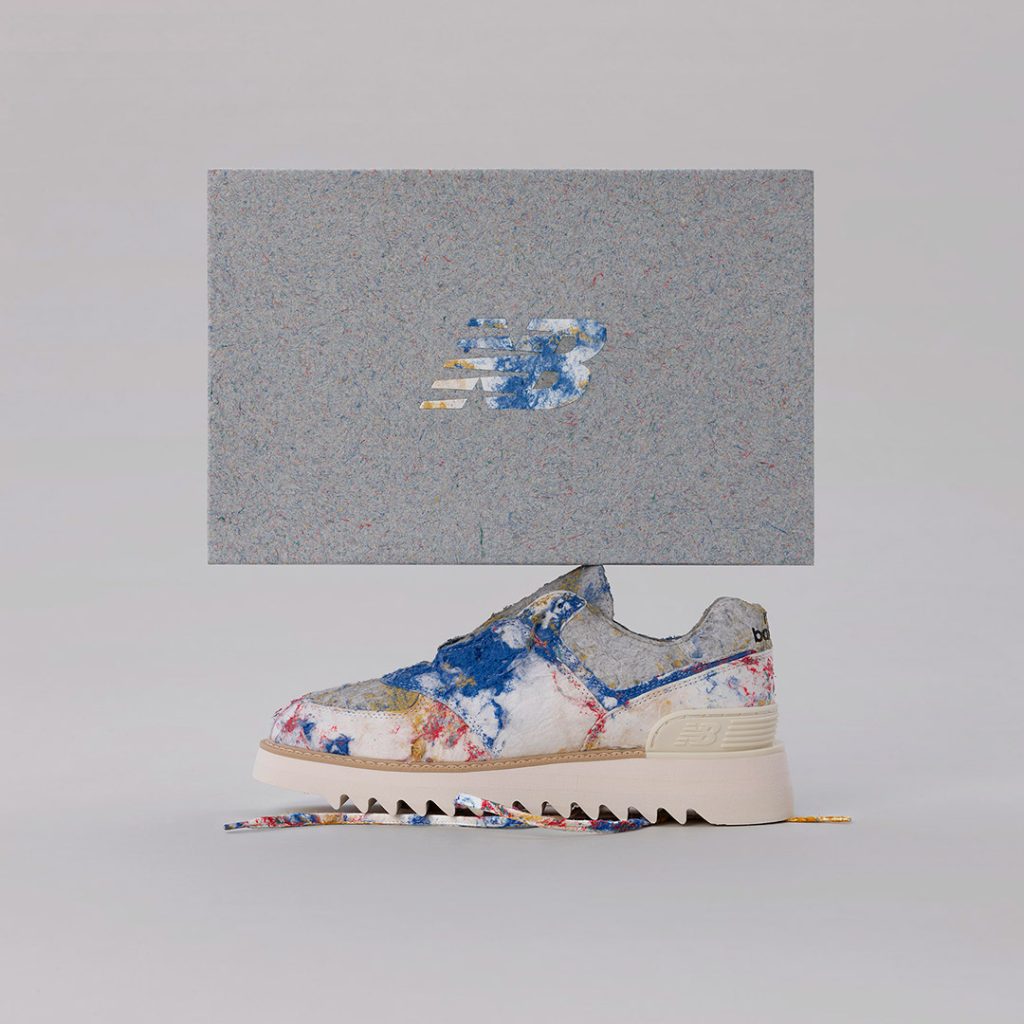
ーThe actual product is cool, too. How do you sell them?
Tanaka: First, we calculate the number of products we can make based on the number of scraps, and then we ask who wants them. After that, we ask the size of the foot of the person who wants to buy them and create them, so we don’t have surplus products. However, I think it is interesting to actively use paper in the process of scooping up scrap materials.

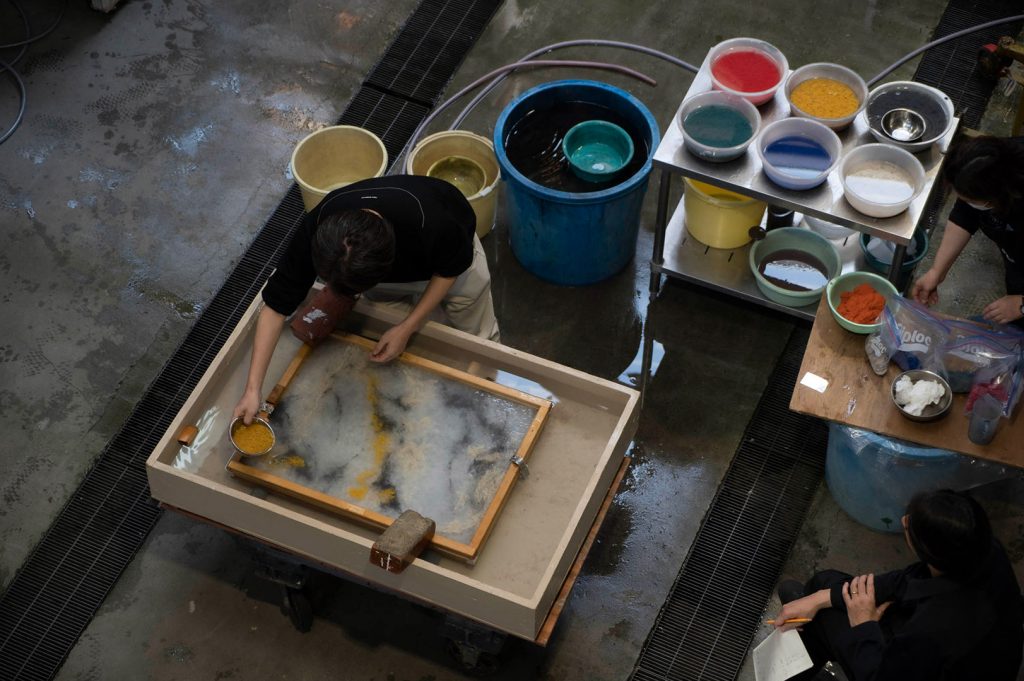
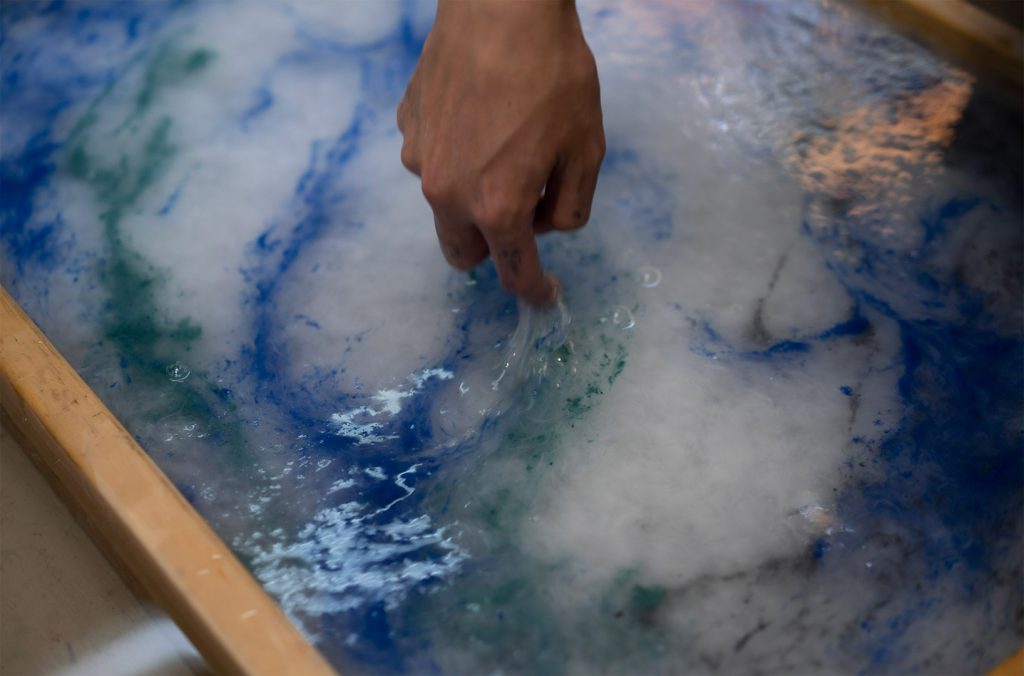
Is it impossible to design in Illustrator if the paper is captured in three dimensions?
ーToday I am talking to you after reading previous interviews with you. I am very impressed by your idea of viewing paper as a three-dimensional object, and not as a flat surface.
The book Tokyo TDC Vol. 32, created in 2021, is unique in its approach to creating three-dimensional objects with paper. Perhaps by three-dimensional you are referring to thickness, right?
Tanaka: That’s right. There is a typography association called the Tokyo Type Directors Club (TDC), and I was in charge of designing the annual book that compiles the winning entries of their annual competition.
In 2021, we decided to give it an overhaul due to a combination of various timing factors. First, we reduced the size, increased the number of pages to make it thicker, and used much lighter paper than before.
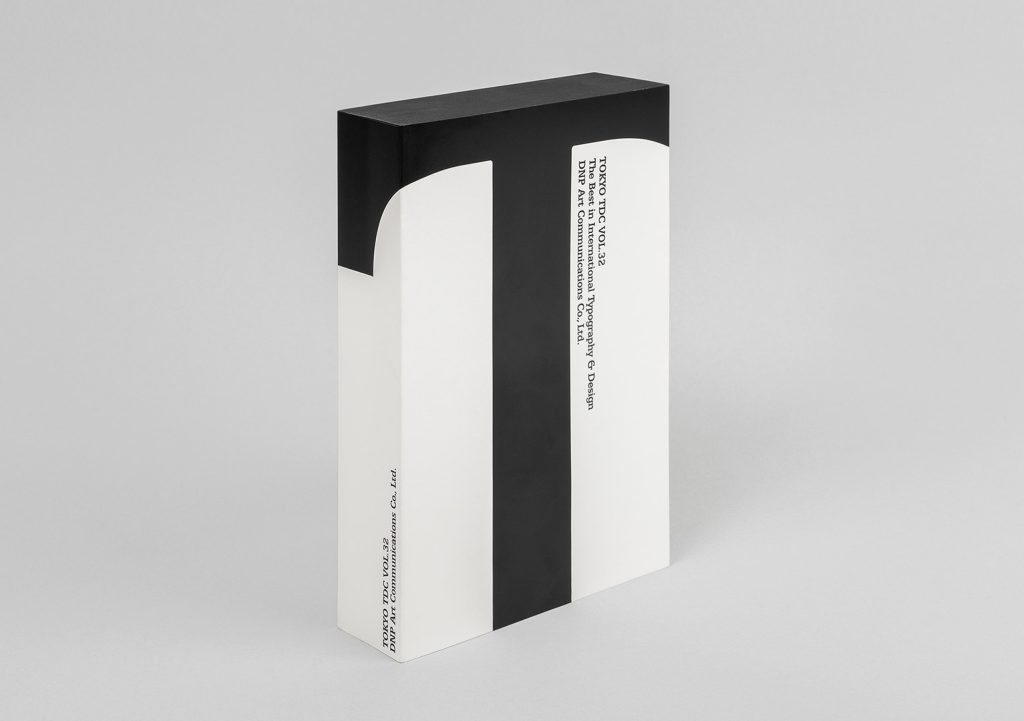
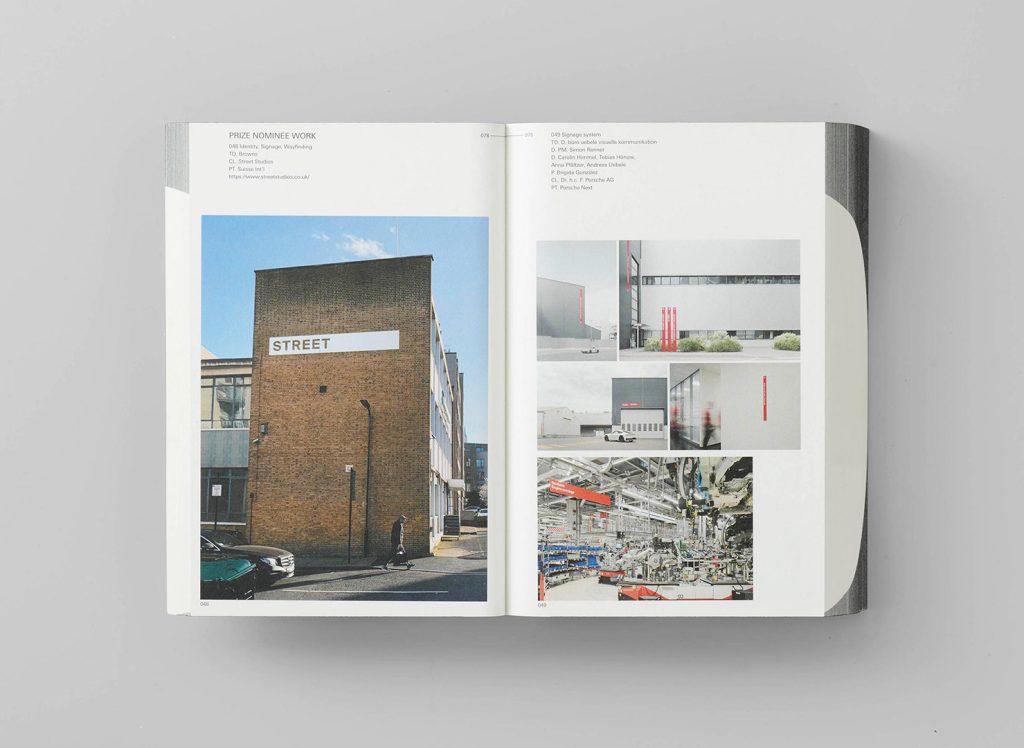
Tanaka: Typography is handled three-dimensionally using the thickness of the paper. Printing on the small edge (the side of the book excluding the spine) is an expression that is not possible digitally. I think this is a part of the book that is only possible because of the binding.
When trying to capture the paper in three dimensions, we had to think of the letters in three dimensions as well, so it was not possible to create them on the Adobe Illustrator screen. Therefore, we actually made a box-shaped mock-up, coloured it, and verified how bold the letters should be to be visible.
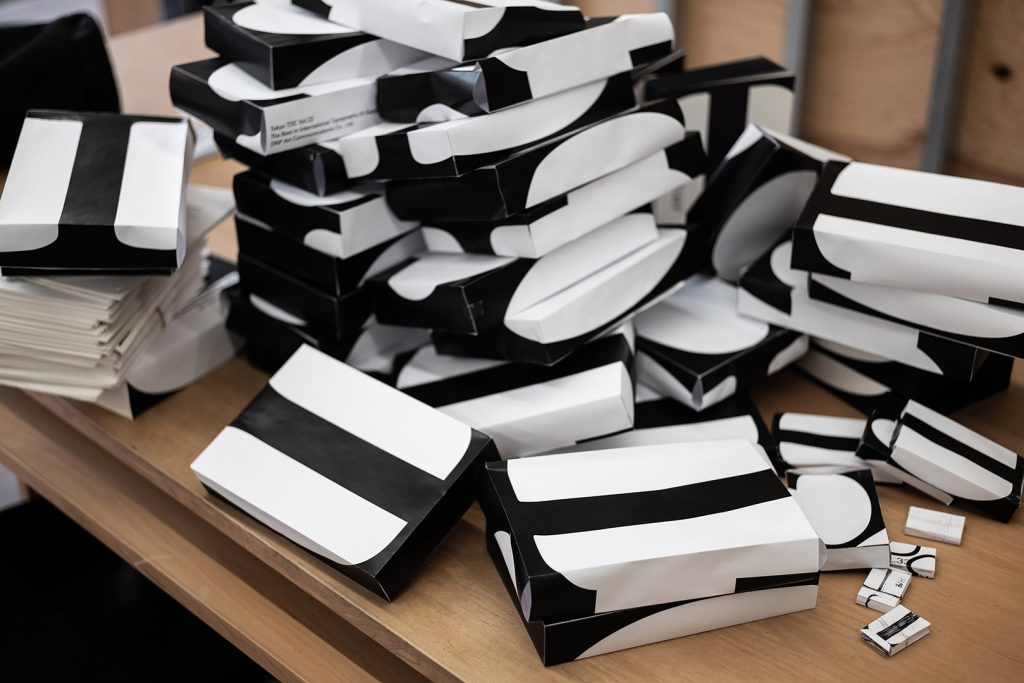
The Japanese graphic industry is aware of the materiality of paper.
ーMr Tanaka, you are a graduate of Musashino Art University’s Department of Scenography, Space, Fashion, Interior and Environment Design. I think that is one reason why you are more oriented toward a three-dimensional approach than a visual one. That said, I would like to know why you are so particular about graphic design.
Tanaka: I love graphics. I think you can even say that I work with paper so that I can be in the graphics industry.
Graphic design means visual communication when translated into Japanese, so it has the role of spreading some elements of information in a broad sense through a visual approach. That’s why I have continued to establish visual information on paper as a medium, combined with industrial elements, for a long time.
However, I think the current situation is that this is being shifted to digital. In this situation, the main activity of graphic designers will be to manipulate flat surfaces in order to convey visual information.
ーIf it is online, you will specialize in manipulating visual information rather than material.
Tanaka: Yes, before 2000, it was common practice to design an image “film” to be fixed on paper, but now it is not the only way.
As in the case of Nerhol‘s works, if you stack sheets of paper, you can embody the thickness of the material, but the images we graphic designers deal with are based on visual information. However, with the rise of the internet, the technology used to convey information on paper is now overwhelmingly digital.
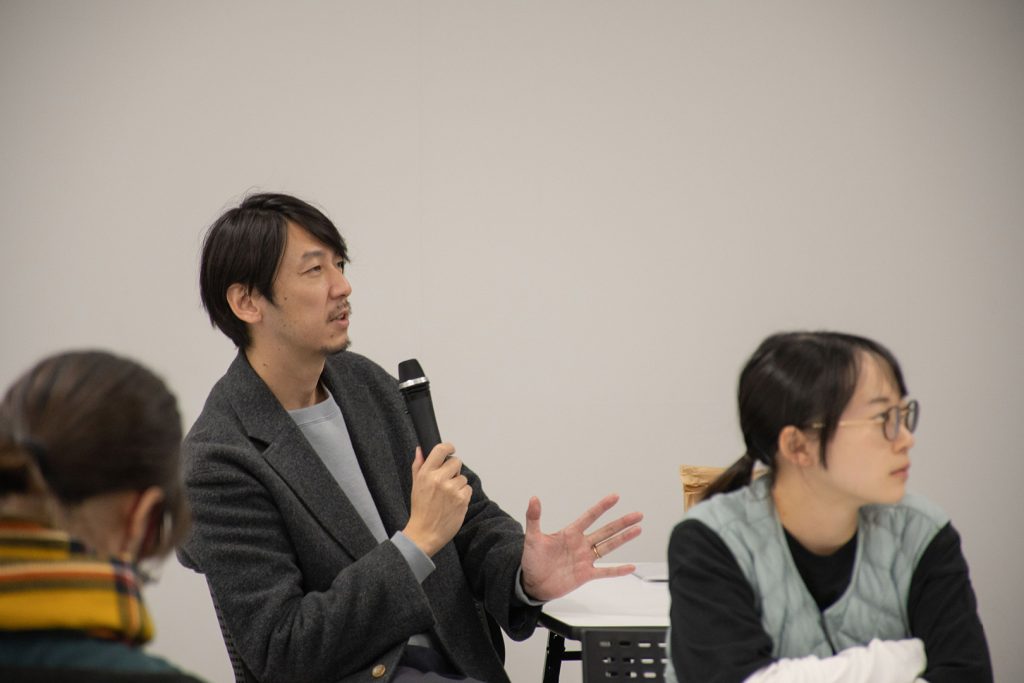
ーIn the sense that information can be freely manipulated, the internet is by far the strongest.
Tanaka: It is strong, can be changed as much as you want, and does not cost money as a material. When a state is created in which the internet surpasses matter in all conditions and restrictions, the question of how we should view the medium of paper, whose nature has been somehow made transparent up to now, comes up at the same time.
However, in the case of Japan, there is still demand for paper from a global perspective. Even now, there are about 20,000 types of paper available for printing, and there is no other country in the world where this is the case. As paper disappears from the world, I think the Japanese graphic industry is keenly aware of this.
ーSo, you have combined the tactile and the graphic in your works.
Tanaka: Intuitively, yes. This is also reflected in the technical aspects. That is why I am not at all suited to old-fashioned poster design. I think that is why I have extended my spatial and three-dimensional interests to include signage design for public facilities.

Double Object attempts to go back and forth between digital space and real space
ーLastly, I would like to ask you about your interest in digital. Digital is a faster medium compared to paper, and I think you have been involved in many projects that are a counter to that.
Tanaka: I am rather fascinated by the digital world. What I can do is different from that, but I think there are many things that can only be done on the internet when materiality is brought closer to the physical.
On top of that, even if the internet had developed as the main medium for conveying information, books would not disappear. However, I also think that a mass of information like that in a newspaper is hard to handle.
ーYou need to keep up with the speed of society, don’t you?
Tanaka: When we think about books, I feel that there are still many stories that have not been told when we unravel the history of books and the role they play in human history. Is there value as an archive? Is there a sense of security in possessing it as a material object? Or is it the inevitability of using the five senses for human beings?
In order to understand them, it is necessary to know about the digital world, and it is impossible to make a critique without pursuing what the advantages of each are.
ーNerhol‘s portrait series started with a critique of the history and form of proof photography, but I think it is necessary to take a critical approach rather than a simple counter, as if you were dealing with the nature of the medium as information by presenting it on the internet first.
Tanaka: I think so. Also, regarding the Double Object project, the photos created in the workshop (*) are forcibly materialized digitally.
ーThat’s right. It has a three-dimensional feel or texture.
*In workshops, participants experienced the process of materialization in which photos are incorporated as the surface design. Participants freely took photos at the university and uploaded two photos to the Double Object website. Then, each photo appeared as a texture, pasted on a tetrahedron, while causing Z-fighting, a bug unique to 3D space.
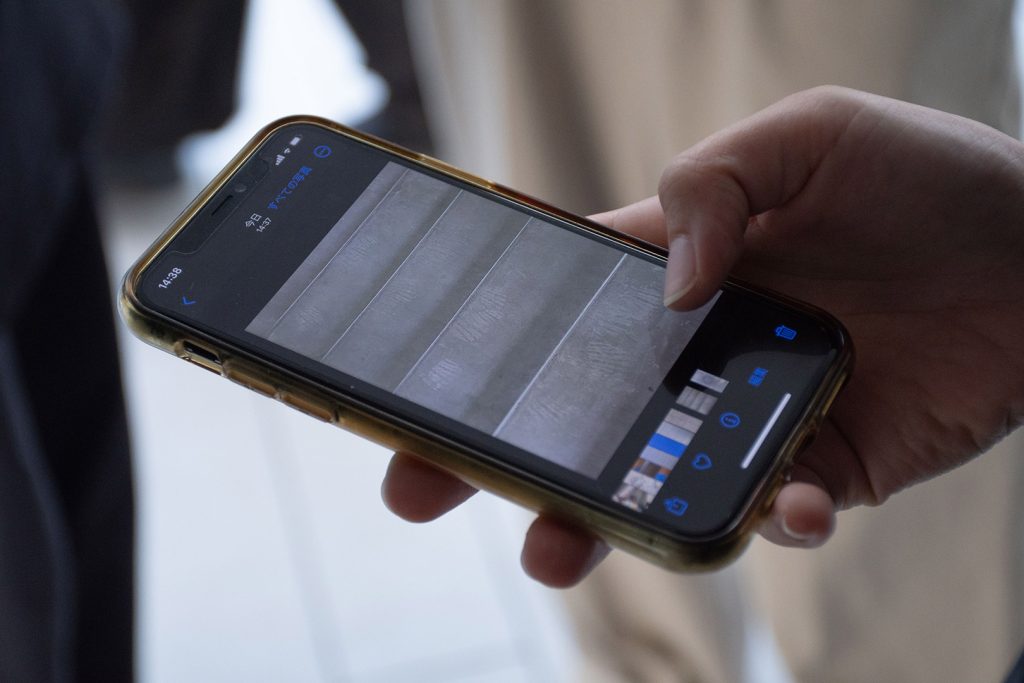
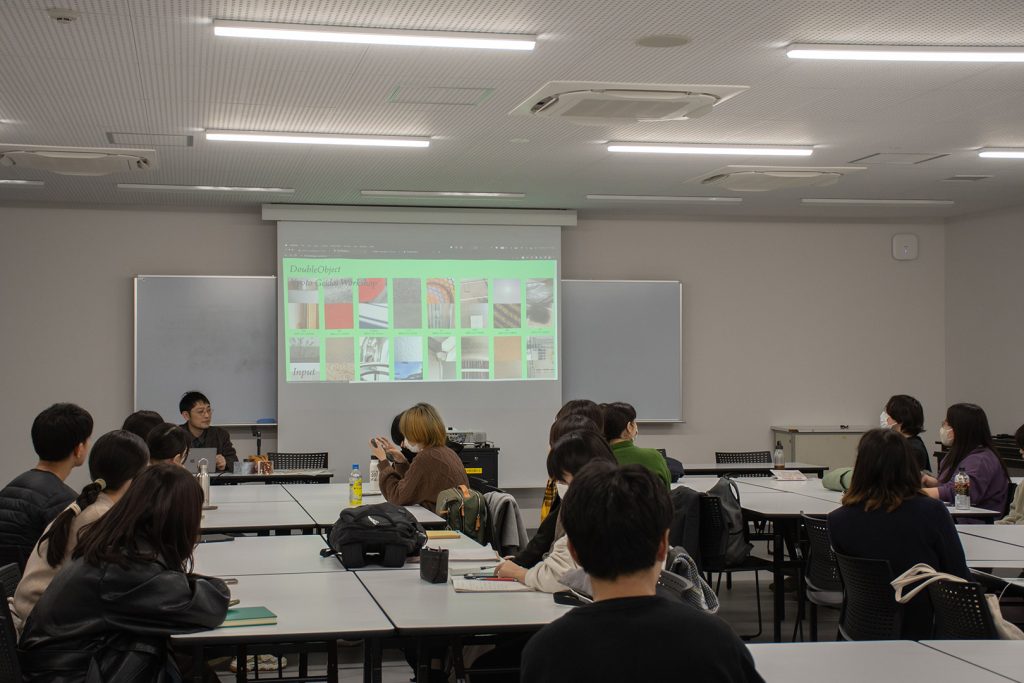
Tanaka: When a photo takes on three-dimensionality as computer graphics, a materiality, something completely different from the flat surface of a photo, accompanies it and makes it exist. However, it is not something that clearly exists as a material, but rather a materiality that has been cut out of the photo. If we could replace it with something else, wouldn’t it begin to manifest itself like a material?
I am very interested in what materiality means at that time. If we can successfully connect the modern approach of raising quality to the point where it can even be considered a material, with the kind of materiality that can only be achieved digitally, the nature of materials in the future may change.

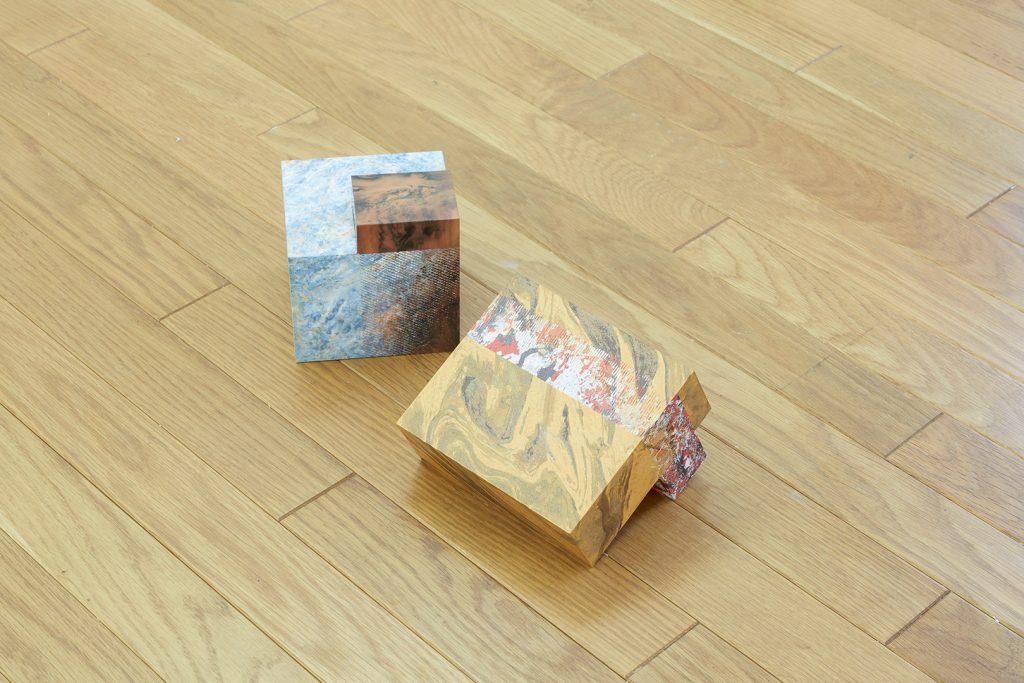
ーDouble Object is truly a test, and there is a sense that we are actually trying out parts that we don’t understand yet and are trying to get something out of it.
Tanaka: For people in their teens and twenties, I think there are some who cannot sense materiality in what is currently available digitally. However, I myself believe that it is possible to perceive things in the digital world as material. However, in order to do so, some kind of definition is necessary, and I think this project is interesting as an opportunity to explore the preliminary stage.
(Composition: Taisuke Shimanuki)
Event Info
-

A project by Taichi Sunayama (SUNAKI Inc.), Yoshihisa Tanaka (center Inc./Nerhol), and GEMINI Lab. It consists of a group of products that bring the phenomenon of Z-fighting, a specific bug of digital 3D space, into the material world as is. In addition to traditional printing techniques such as silk printing and paper processing, each piece is finished by hand in order to physically express a digital object consisting of two overlapping boxes with different textures.
- Related Link: https://doubleobject.sunaki.jp/
Guest Profile
-

Yoshihisa Tanaka
Yoshihisa Tanaka
Born in 1980 in Hamamatsu City, Shizuoka Prefecture. Recent works include VI planning for the Tokyo Photographic Art Museum and art direction for the bookstore, POST, The Tokyo Art Book Fair, ISSEY MIYAKE, and the Takeo Paper Show. He is also active in the artist duo, Nerhol with Ryuta Iida (sculptor). Major solo exhibitions include Index at Foam Photography Museum (Netherlands), Promenade at the 21st Century Museum of Contemporary Art, Kanazawa, Interview, Portrait, House and Room at Youngeun Museum of Contemporary Art (Korea).
- Related Link: https://www.instagram.com/yoshihisa_tanaka/
- Related Link: https://www.instagram.com/ner_hol
Co-created by
-
Taisuke Shimanuki
Writer
Taisuke Shimanuki
Writer
Art Writer/Editor. Born In Kanagawa In 1980. Living In Beppu, Kyoto. Writes, Edits, And Plans For Tokyo Art Beat, CINRA.NET, And Bijutsu Techo. In 2019, Formed A Collective Research Group With Ai Saegusa (Artist) And Pijin Neji (Dancer). From 2021, The Team Name Will Be Changed To "Uho", And They Will Continue To Research And Output In Various Forms Such As Exhibitions, Performances, And Editorials.
- Kamoberi | Social Distance Art Magazine: http://kamoberi.com/
Tag
Share
Discussion
Index
Index
Archives
Recommend
Recommend
Recommend
Recommend
Recommend
-

{ Prototype }
GEMINI Laboratory GLOBAL DESIGN AWARDS WINNERS ANNOUNCEMENT
GEMINI Laboratory GLOBAL DESIGN AWARDS WINNERS ANNOUNCEMENT
GEMINI Laboratory GLOBAL DESIGN AWARDS WINNERS ANNOUNCEMENT
-

{ Special }
Working In The Metaverse
Working In The Metaverse
Working In The Metaverse
-

{ Special }
Senior in mind – towards an Inclusive Mirror-World
Senior in mind – towards an Inclusive Mirror-World
Senior in mind – towards an Inclusive Mirror-World
-

{ Community }
The Art Director Of Cluster Talks About UI/UX Design Of “A World Without Touch”
The Art Director Of Cluster Talks About UI/UX Design Of “A World Without Touch”
The Art Director Of Cluster Talks About UI/UX Design Of “A World Without Touch”
-

{ Community }
What is the World of “Virtual Photography” that Fascinated Landscape Photographers? Interview with Yuichi Yokota
What is the World of “Virtual Photography” that Fascinated Landscape Photographers? Interview with Yuichi Yokota
What is the World of “Virtual Photography” that Fascinated Landscape Photographers? Interview with Yuichi Yokota
Hot topics
Hot topics
Hot topics
Hot topics
Hot topics
-

{ Prototype }
GEMINI Laboratory GLOBAL DESIGN AWARDS WINNERS ANNOUNCEMENT
GEMINI Laboratory GLOBAL DESIGN AWARDS WINNERS ANNOUNCEMENT
GEMINI Laboratory GLOBAL DESIGN AWARDS WINNERS ANNOUNCEMENT
-

{ Community }
Scenting the metaverse with olfactory futurist, Olivia Jezler
Scenting the metaverse with olfactory futurist, Olivia Jezler
Scenting the metaverse with olfactory futurist, Olivia Jezler
-

{ Community }
Architect Mark Foster Gage: Kitbashing opens up design possibilities
Architect Mark Foster Gage: Kitbashing opens up design possibilities
Architect Mark Foster Gage: Kitbashing opens up design possibilities
-

{ Community }
Fashion Historian Pamela Golban: Beyond the Fusion of Virtual and Physical
Fashion Historian Pamela Golban: Beyond the Fusion of Virtual and Physical
Fashion Historian Pamela Golban: Beyond the Fusion of Virtual and Physical
-

{ Community }
Ars Electronica’s Hideaki Ogawa on the Happy Relationship between Media Art and the City
Ars Electronica’s Hideaki Ogawa on the Happy Relationship between Media Art and the City
Ars Electronica’s Hideaki Ogawa on the Happy Relationship between Media Art and the City
-

{ Community }
Unlocking New Worlds: How Gaming is Leading Southeast Asia’s Journey into Web3
Unlocking New Worlds: How Gaming is Leading Southeast Asia’s Journey into Web3
Unlocking New Worlds: How Gaming is Leading Southeast Asia’s Journey into Web3
-

{ Community }
Tomihiro Kono, who also designs wigs for Björk, explores multiple areas of creativity, including 2D, 3D, and AR
Tomihiro Kono, who also designs wigs for Björk, explores multiple areas of creativity, including 2D, 3D, and AR
Tomihiro Kono, who also designs wigs for Björk, explores multiple areas of creativity, including 2D, 3D, and AR
Special
Special
Special
Special
Special
Featured articles spun from unique perspectives.
What Is
“mirror world”...
What Is
“mirror world”...
What Is
“mirror world”...
What Is
“mirror world”...
What Is
“mirror world”...
“mirror world”... What Is
“mirror world”... What Is
“mirror world”... What Is
“mirror world”... What Is
“mirror world”...
Go Down
Go Down
Go Down
Go Down
Go Down
The Rabbit
The Rabbit
The Rabbit
The Rabbit
The Rabbit
Hole!
Hole!
Hole!
Hole!
Hole!
Welcome To Wonderland! Would You Like To Participate In PROJECT GEMINI?

